Warcraft Retrospective 32: Ah Yes, the “Alliance” Campaign
As we saw last time, much of the expansion night elf campaign, especially the second half, might as well not have existed. Sure, it introduced Maiev, a now-iconic character, and the Broken Isles, which later became the setting of a well-liked expansion (albeit in a heavily retconned form), but most of the events of this campaign specifically are never mentioned again in later Warcraft lore.
The events of the next campaign, however, became very important and foundational to Warcraft lore as we know it now.
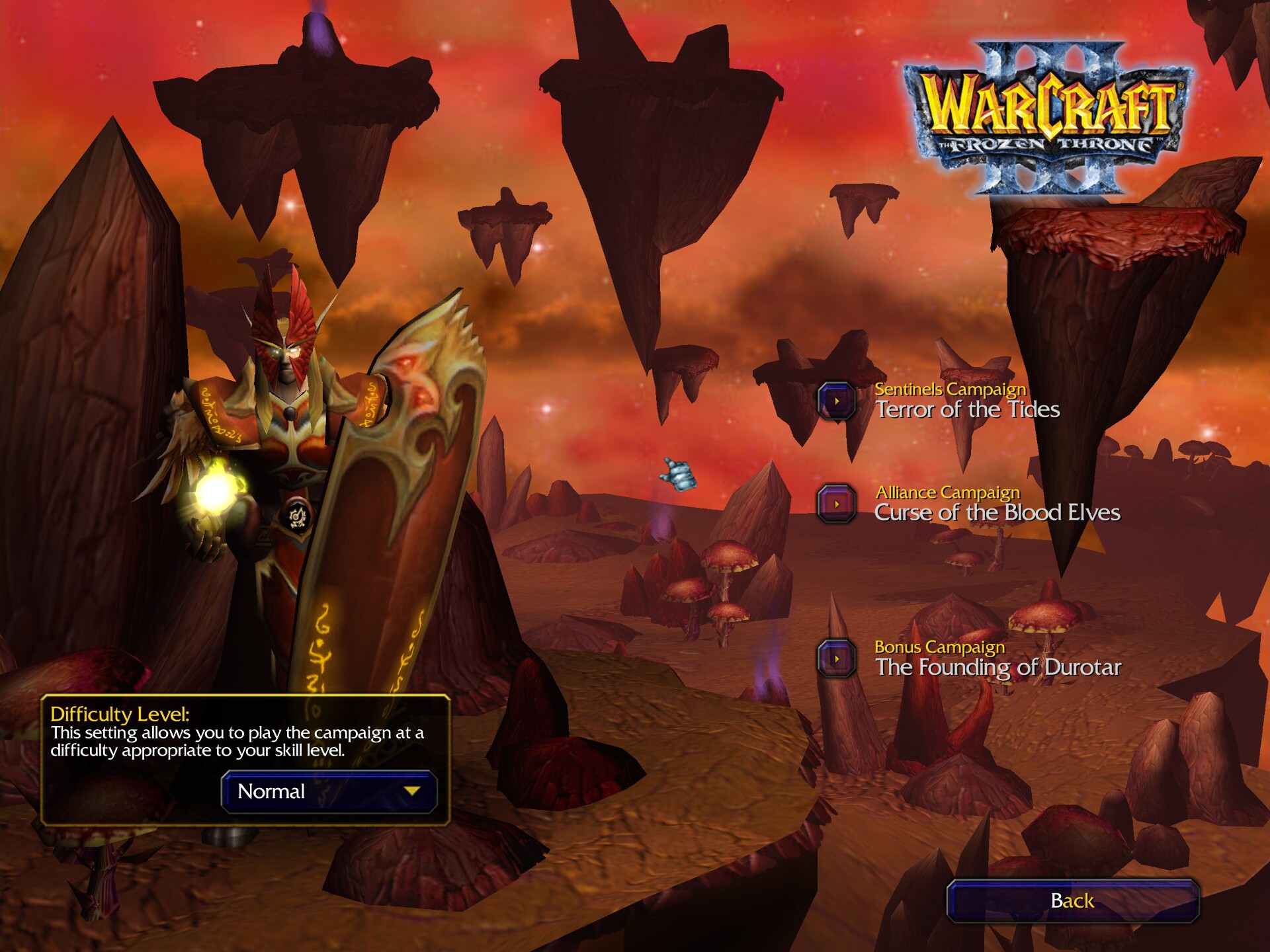
We’re embarking on the so-called “Alliance” campaign. I say “so-called” because, as we’ll see, we’ll only be playing the actual Alliance tech tree in the first mission, and in the rest of them we’ll have custom, campaign-only tech trees. It’s interesting to note that in Reign of Chaos, the campaigns were named the human, undead, orc, and night elf campaigns, while here, we have the Sentinel, Alliance, and Scourge campaigns. I wonder if this campaign is the reason: calling it a human campaign would be blatant false advertising.
The end result is that people who were expecting a more traditional Alliance campaign, perhaps focusing on Jaina’s Alliance-in-exile in Kalimdor, are going to be disappointed. To learn what that group has been up to, we’ll have to turn to the orc campaign, which is completely disconnected from the main story.
Instead, we’ll be focusing on Kael’thas and his blood elves, who begin the story as part of the Alliance remnant in a ruined Lordaeron.
Misconceptions

At the ruins of Dalaran, Kael and his men are having a meeting with Grand Marshal Garithos1, the leader of the remaining Alliance military in Lordaeron, who opens with a disparaging remark towards elves in general.
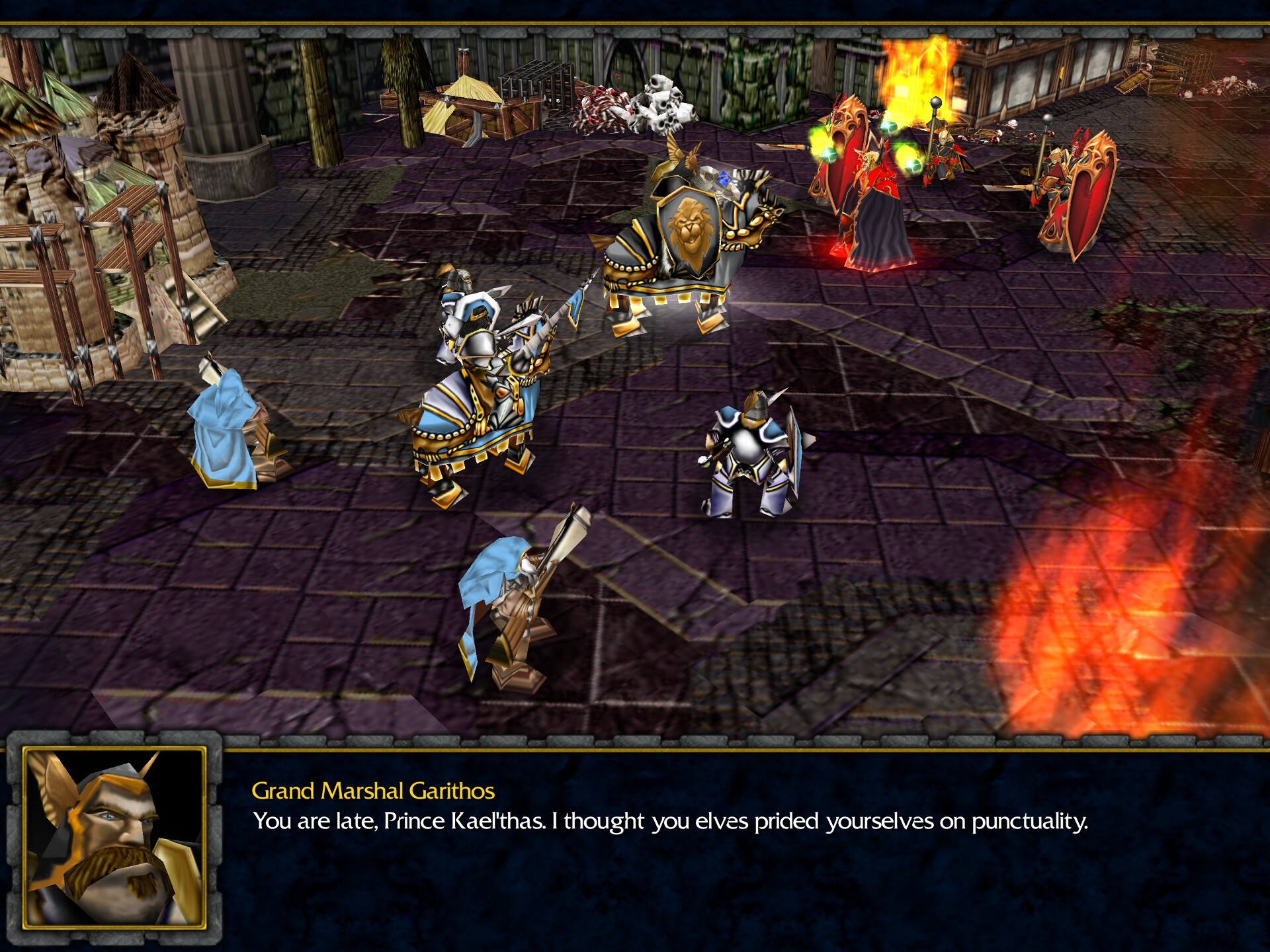
Garithos has no redeeming qualities. He’s a racist, incompetent, oafish, racist, weak-minded, arrogant, racist, tactically-suicidal, jerkass racist. In a story full of anti-heroes and villain protagonists, he exists as a character the players can totally, unambiguously hate — and fulfills that role well, being one of the most despised characters in the entire Warcraft franchise. It’s important to note that we hate and despise him as a person, because of his personality and actions; this is Classic Blizzard, not Twilight Blizzard, where we hate the writers for portraying characters a certain way. Garithos is intentionally loathsome, whereas despised characters in Twilight era WoW end up despised unintentionally because of bad writing.
Garithos has received a report that the undead have begun a new offensive to retake Dalaran, and he’ll be leaving for the front immediately. Kael is eager to go with him, but Garithos instead assigns him to repairing the observatories. That’s right, he’s using his highly skilled warriors and mages as manual labor, and as we’ll see, it’s only thanks to a chance meeting that this mission doesn’t end in total disaster.
Once the cutscene ends, we gain control of Kael and a few units.

I like Kael’s character design (except for the three green orbs floating around him for some reason). His portrait’s facial features show that we’re not dealing with a goody-two-shoes hero here, but a desperate man resorting to desperate measures. His voice sells this impression, too. It fits the overall despairing tone of this entire campaign, which takes place among charred ruins and you have to build your future from whatever scraps you find.
And the background music perfectly fits the tone of the campaign as well.
It captures the state of the Alliance at this point: it has fallen on hard times, and whole nations lie in ruins, but its spirit endures. It mixes in desperation, dignity, and resolve. And intentional or not, YouTube commenter @nausherwanbabry identifies parts of this theme with going through the Seven Kingdoms in order: Lordaeron, Stromgarde, Stormwind, Alterac, Dalaran, Gilneas, and finally, Kul Tiras.
The mission takes place among the ruins of Dalaran, amid desolation wrought by the Scourge. A lone peasant is repairing the first observatory while we explore the eastern, urban section with our starting troops. Kael is a blood mage starting with Flame Strike, a telegraphed AoE, and Banish, which makes a unit temporarily unable to attack while also making it temporarily immune to physical damage (but taking extra damage from spells). Flame Strike pairs well with the new unit, the spell breaker, which is immune to magic and thus can stand safely in Flame Strike’s area of effect.
…Which would be well and good, except you also have footmen, who are not immune to magic. So you still have to be cautious about positioning your units.
Spell breakers are… okay. They’re a rather awkward combination of frontliner and tech; their selling point is Spellsteal, which automatically redirects enemy buffs to your units and your debuffs to enemy units. They also have Control Magic, which can take control of an enemy summoned unit by spending its HP in mana. There’s actually a scripted scene to educate you on its use, where a rogue wizard summons a water elemental. Unfortunately, because of balance changes since the campaign was made, you can now only take control of a wounded water elemental, which the encounter doesn’t explain; a spell breaker doesn’t have enough mana to steal a full-health elemental.
You’re fighting mostly bandits (including rogue wizards), mutants, and demons. There’s also a side quest to dig up supply caches.
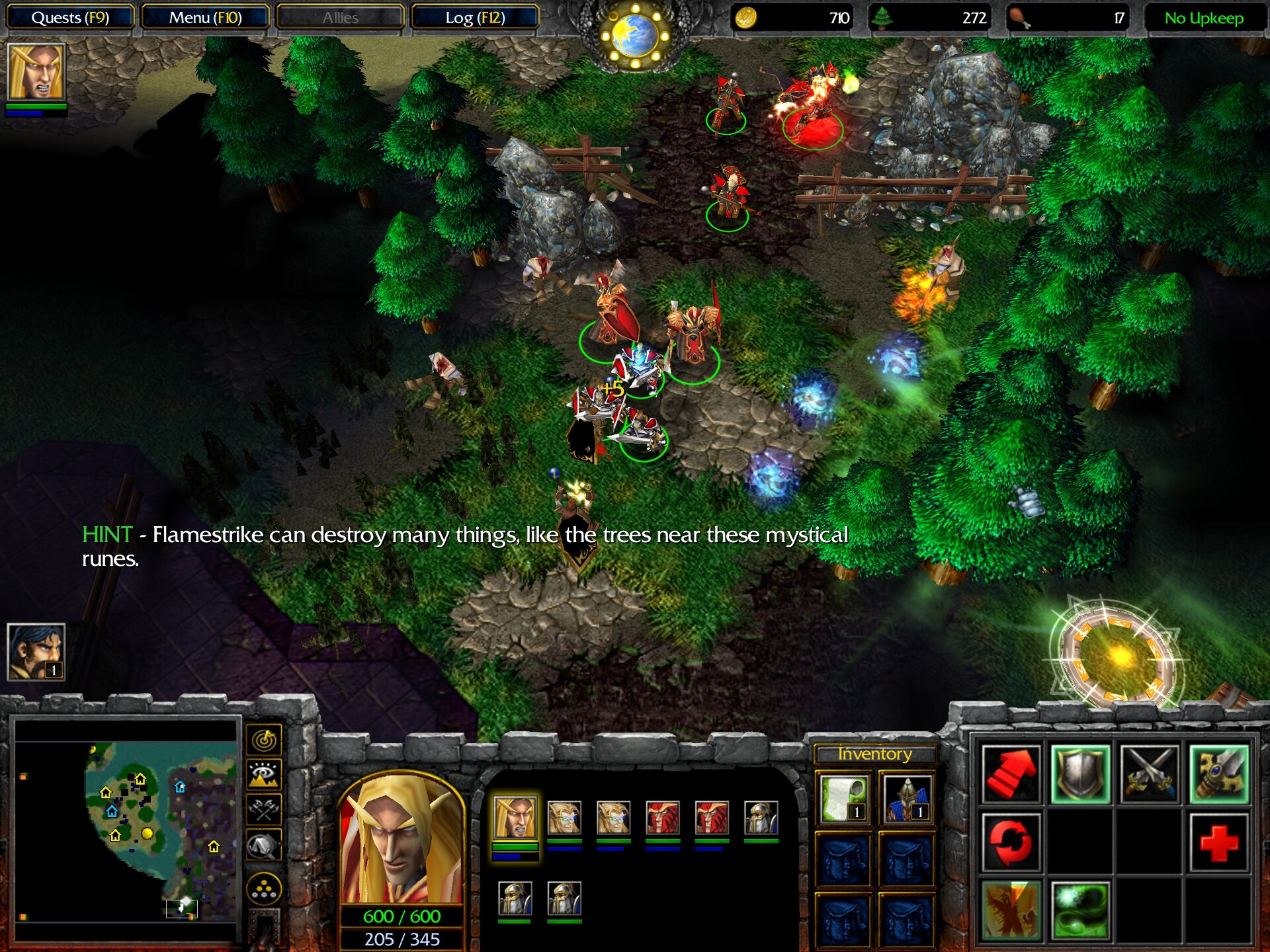
The caches contain tiny versions of a town hall, barracks and altar of kings. When placed by a hero, these items quickly construct the corresponding buildings. It looks like we’ll be building a base here. And indeed, once the first observatory is repaired, it reveals a large island with a gold mine, populated by creeps.
Except Kael has no means to get there, as the undead have burned down the local shipyard. Unsure what to do, Kael has a surprise encounter with… Illidan’s naga!
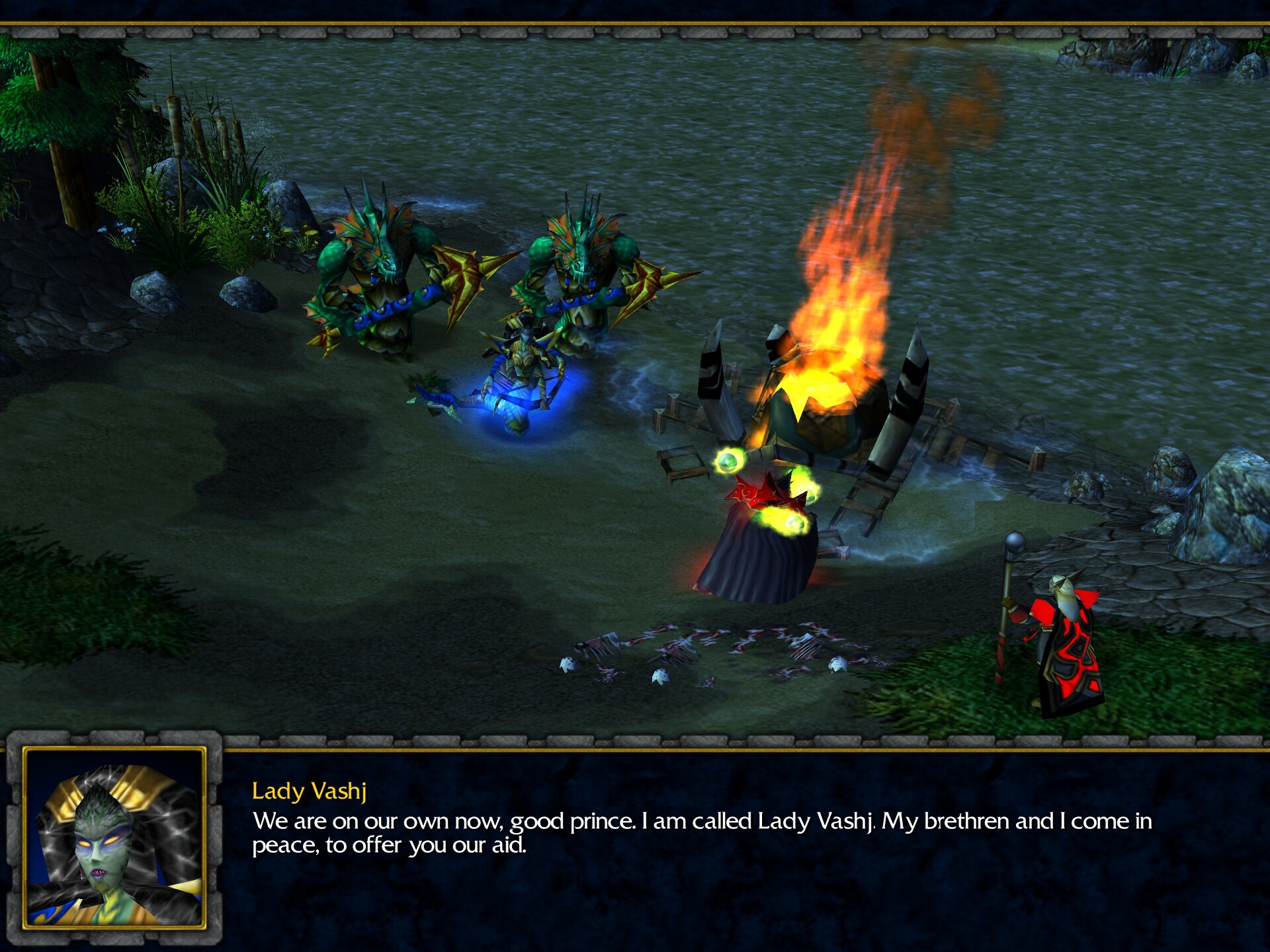
Vashj clarifies that with Illidan gone, the naga are no longer following him, and are on their own. The two races share a common ancestry, and the undead are their mutual enemies, so Vashj brings two transport ships as gifts, for free, to help Kael and his men cross the water.
We do just that, and immediately construct a rudimentary base from Kael’s inventory.
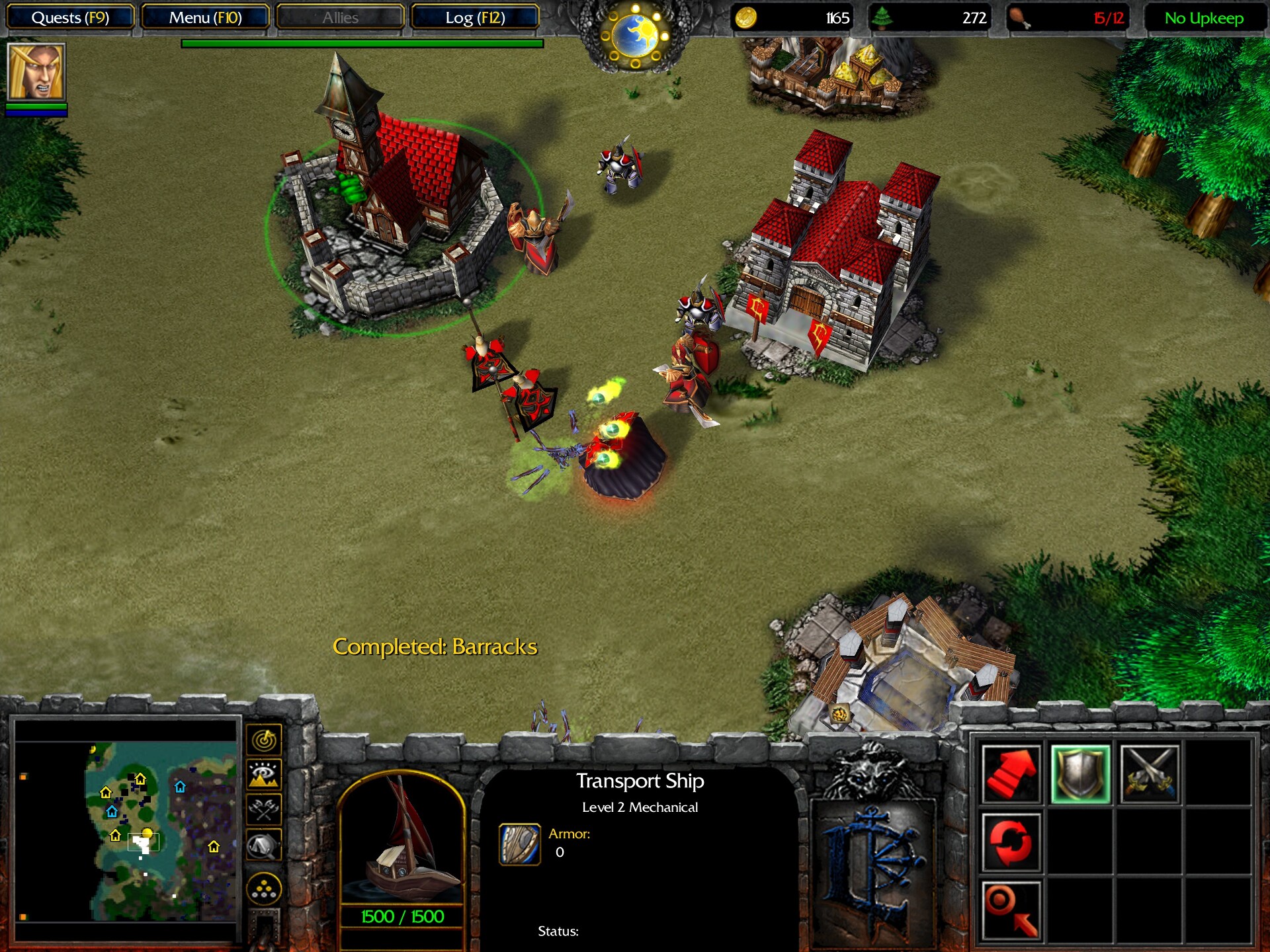
…And because we’re still exceeding the food cap, I have to ferry the lone peasant who was repairing the observatory, so he can build some farms. Next we properly build up the base, constructing secondary buildings and clearing troll creeps (and their little dogs, too) from the island while fending off small undead attacks, and while also repairing the second observatory.
Yes, I have to say it, I like this mission for its atmosphere, but it’s kind of a drag. You have to build up your forces because the last observatory is protected by a tough boss, but you have to develop a base almost from scratch. It’s not as tiresome as Beyond the Dark Portal, where you often started with just peasants mission after mission, but it’s a departure from the overall faster pace of Warcraft 3.
Repairing the second observatory reveals an undead base on the same island, across the narrow strait. I build up an army and destroy it, which is straightforward.
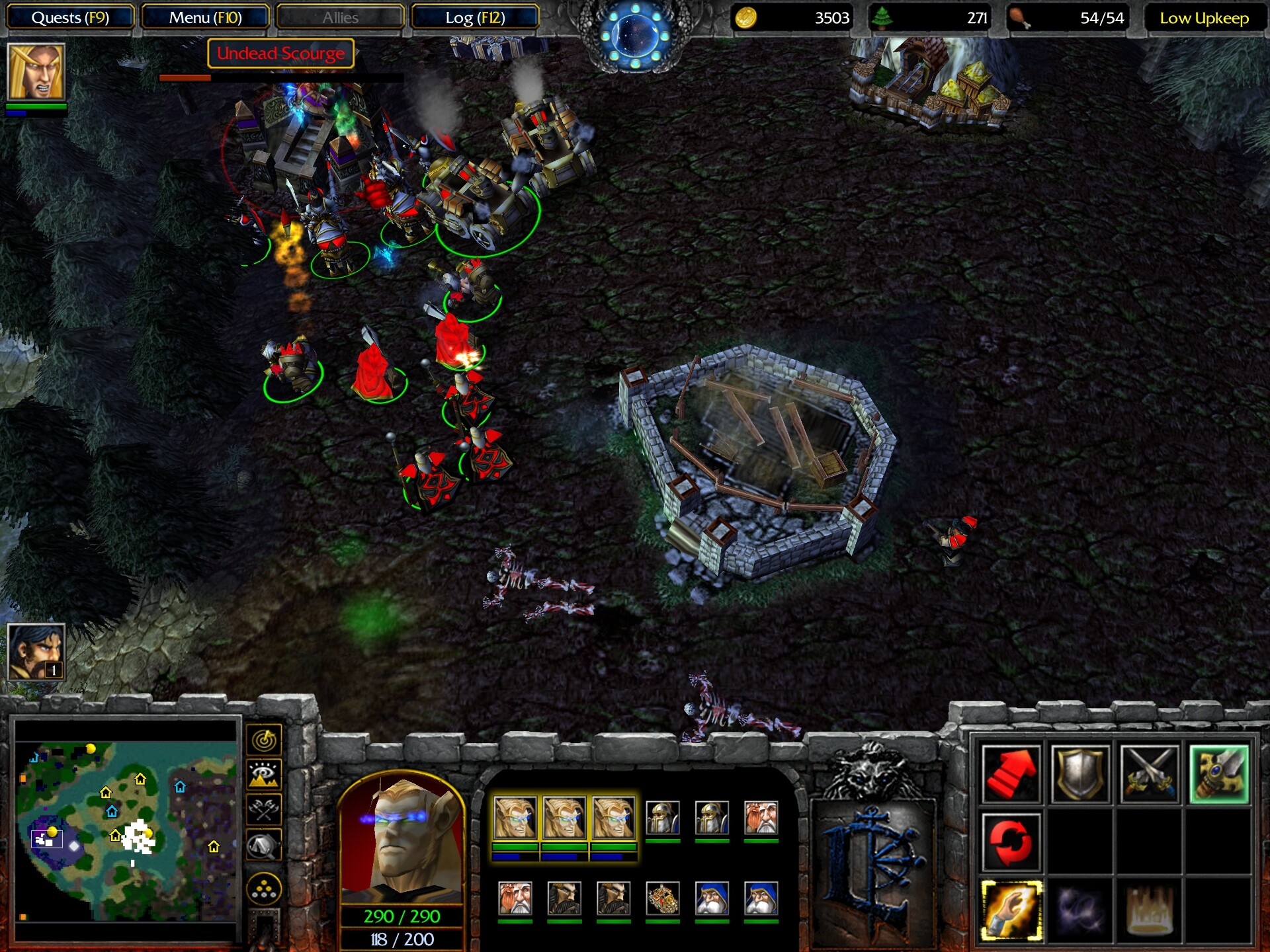
The main threat is gone, but we still have one observatory to repair. There’s now no time pressure whatsoever, so I sailed around the map, killing the remaining creeps (gnolls and ogres) and taking their stuff before bringing an army of peasants to repair the third observatory in record time.
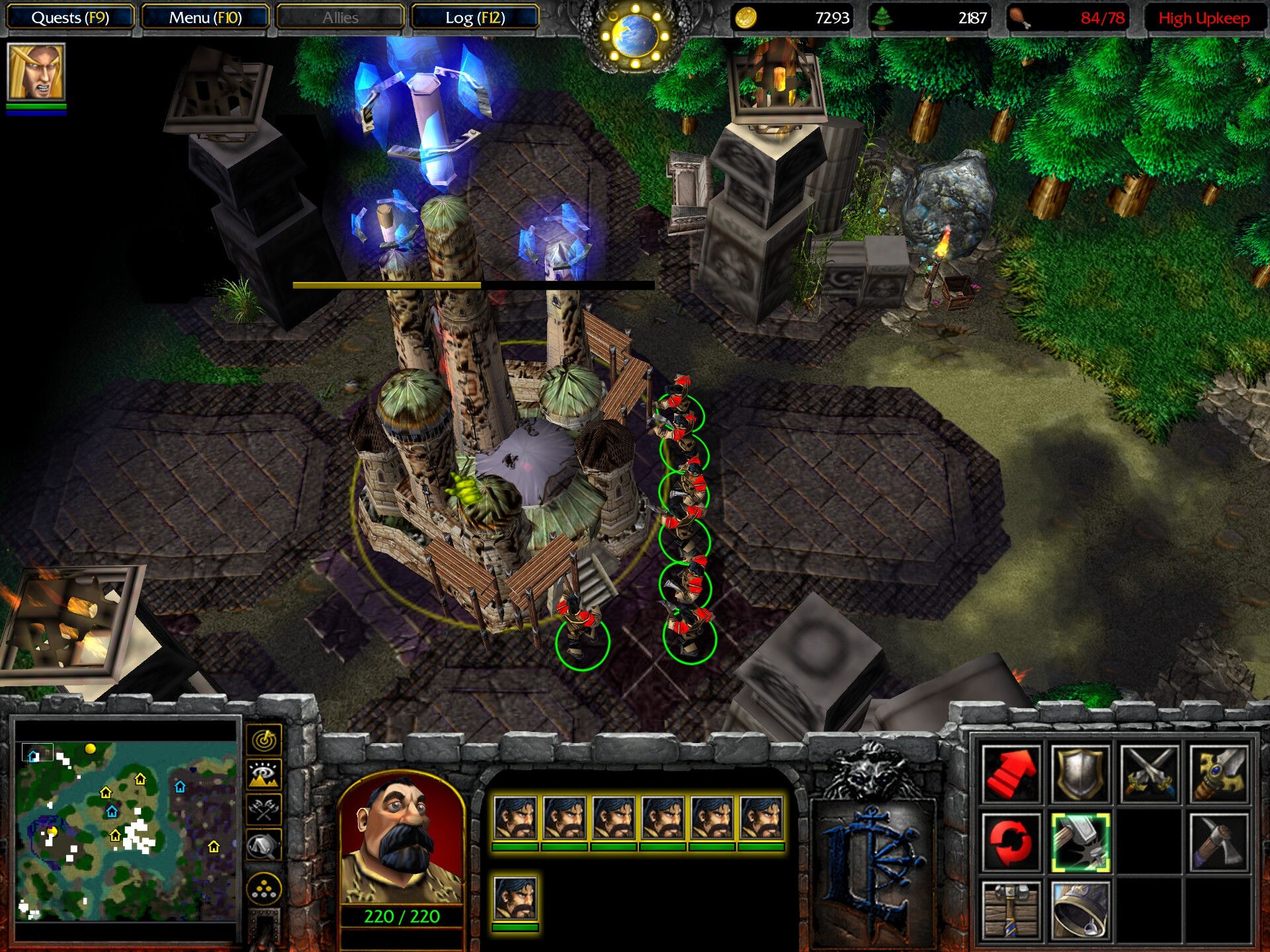
With the observatories repaired, Garithos returns. You’d think he’d be glad Kael completed his assigned task, but well, this is Garithos we’re talking about. He received word of him consorting with the “vile” naga.
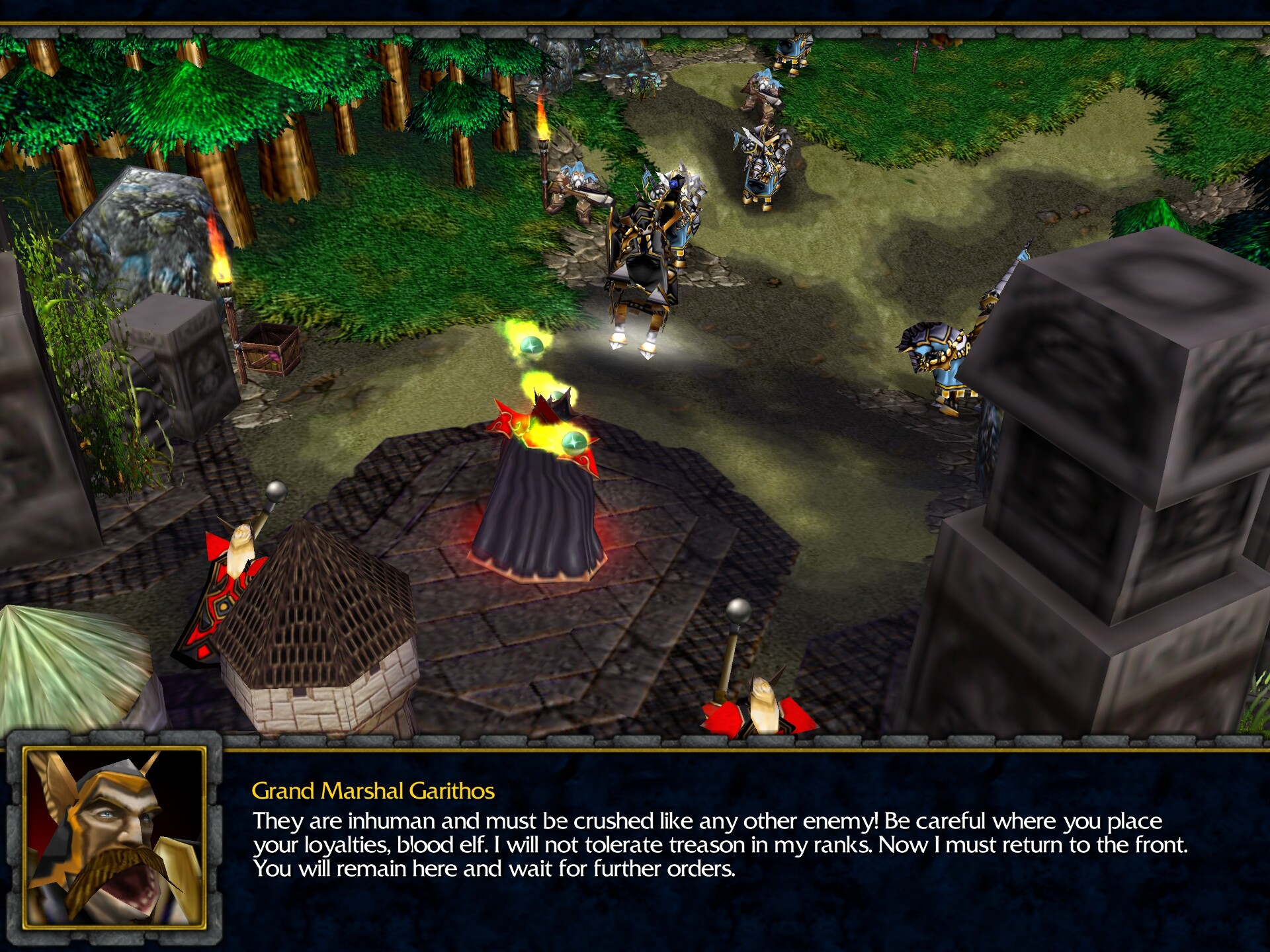
For now, Garithos leaves Kael with just a warning. For now.
A Dark Covenant
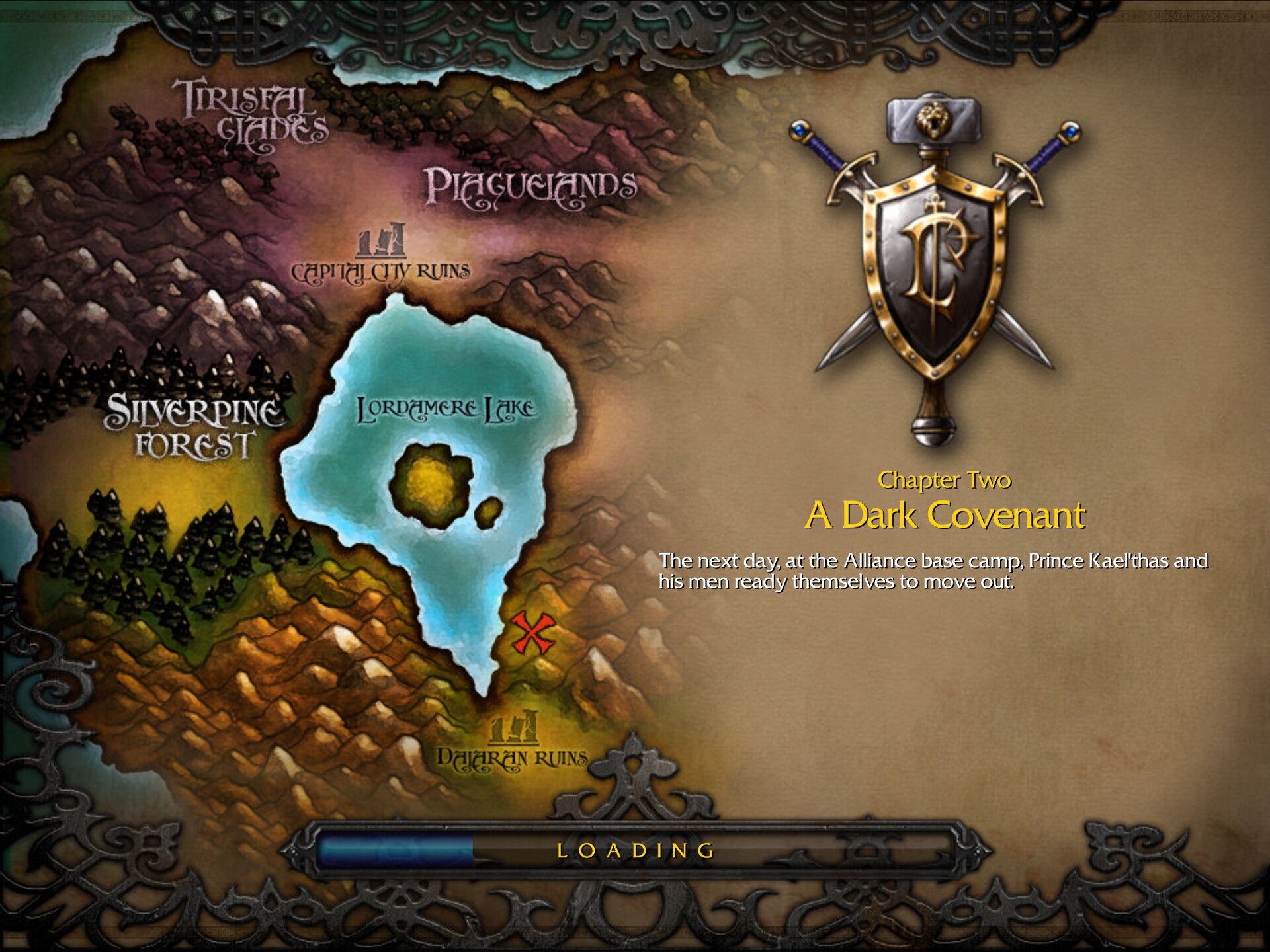
An emissary arrives at Kael’s camp. The observatories have detected a large undead force moving this way, and Garithos wants Kael to crush them. This doesn’t sound too difficult, but… there’s a catch.
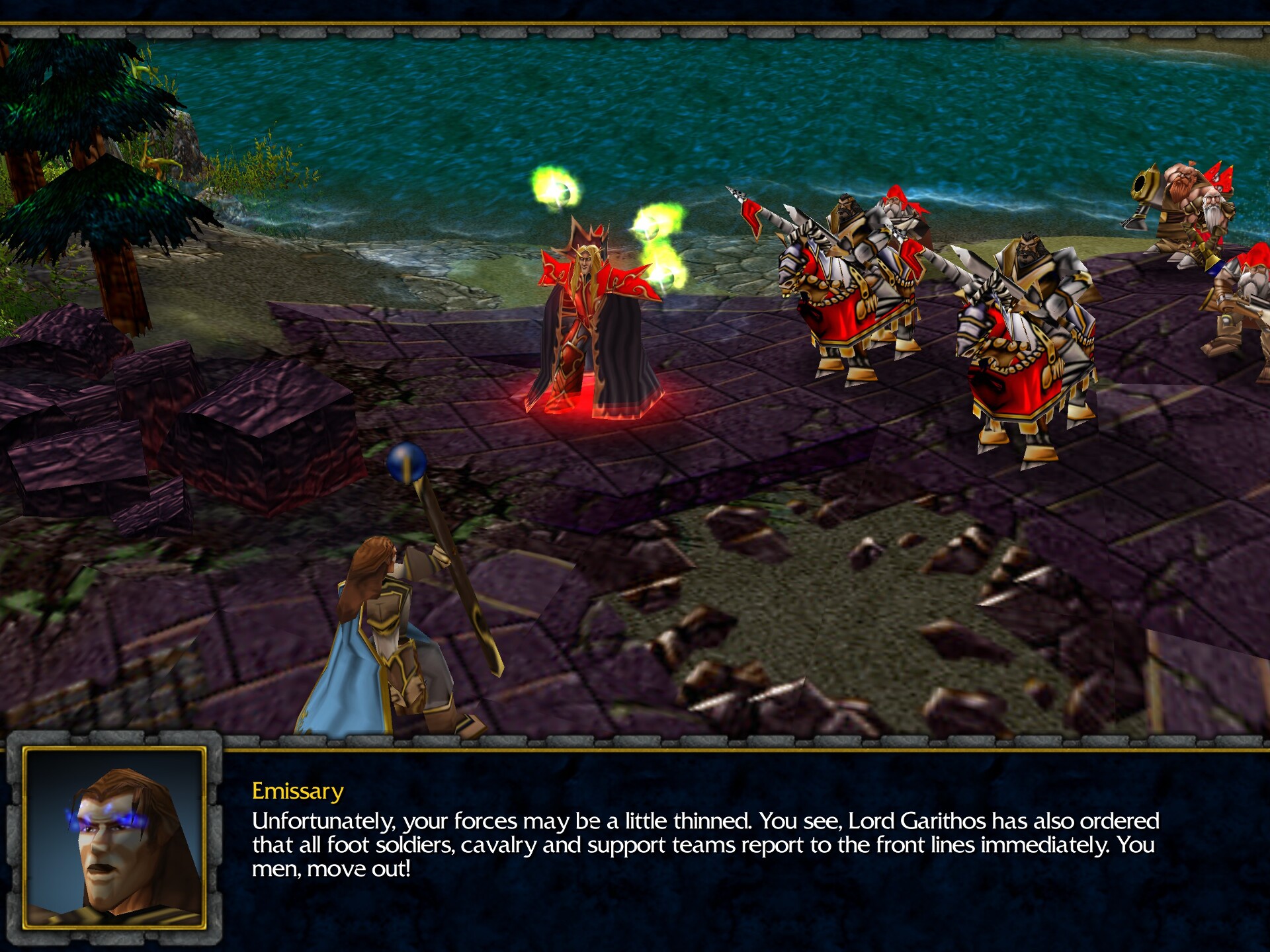
The knights, riflemen, and mortar teams heed the emissary’s words and move out. “This is preposterous!” exclaims Kael. “Am I to assault the undead with nothing but sticks and harsh language?”
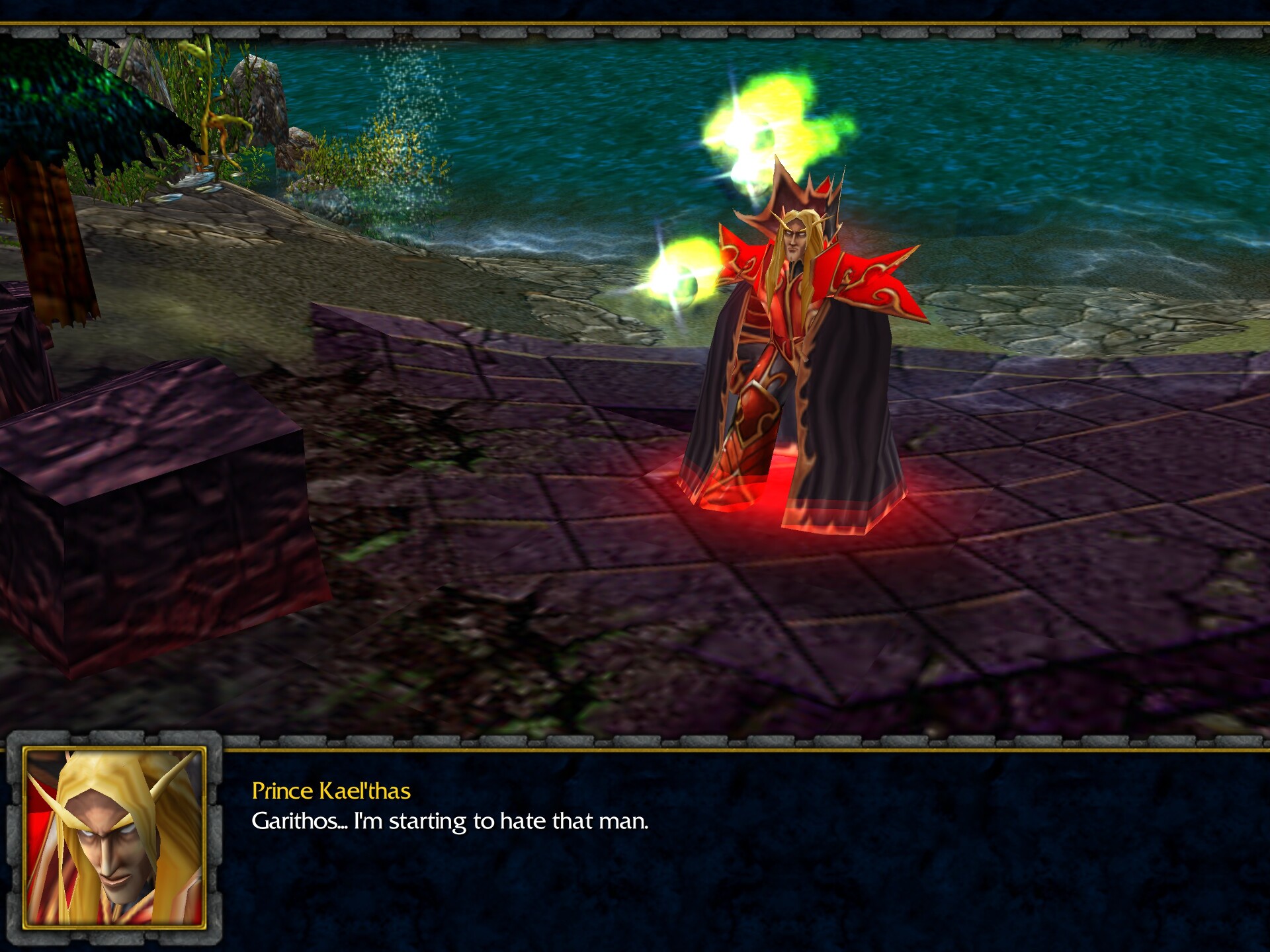
In a nice case of visual continuity, this mission takes place on a near-copy of the first mission’s map, with the eastern urban portion gone and some new land in the west revealed.

In the previous mission, you had access to the entire Alliance tech tree. Here, you’re left with just the blood elves, so there’s a grand total of six units you can build: the sorceress, priest and spell breaker, plus the dragonhawk rider (a new flying unit that specializes in anti-air) and the campaign-only blood elf swordsman (a reskinned footman) and archer (a recolored, well, archer). What’s worse, the undead are advancing with an overwhelming force. Like in Grom Hellscream’s second mission, at the beginning, all you can do is watch your outlying bases get pulverized into dust.
What’s worse worse, your remaining base, on the island, has no gold mine.
At this dark hour, the naga once again bring much-needed help.

Kael has doubts, as Garithos would disapprove, but Vashj points out that he’s not here. Besides, Kael doesn’t have much of a choice.
This mission is reportedly brutally hard on hard difficulty because you have no siege units, are left against five bases, and the green base is enormous — and constantly sending attacks your way, putting pressure on you to coordinate attack and defense at the same time. On normal difficulty, however, I found it pretty easy. I immediately besieged the easiest base to take — the southeastern one — and erected an expansion in its place.
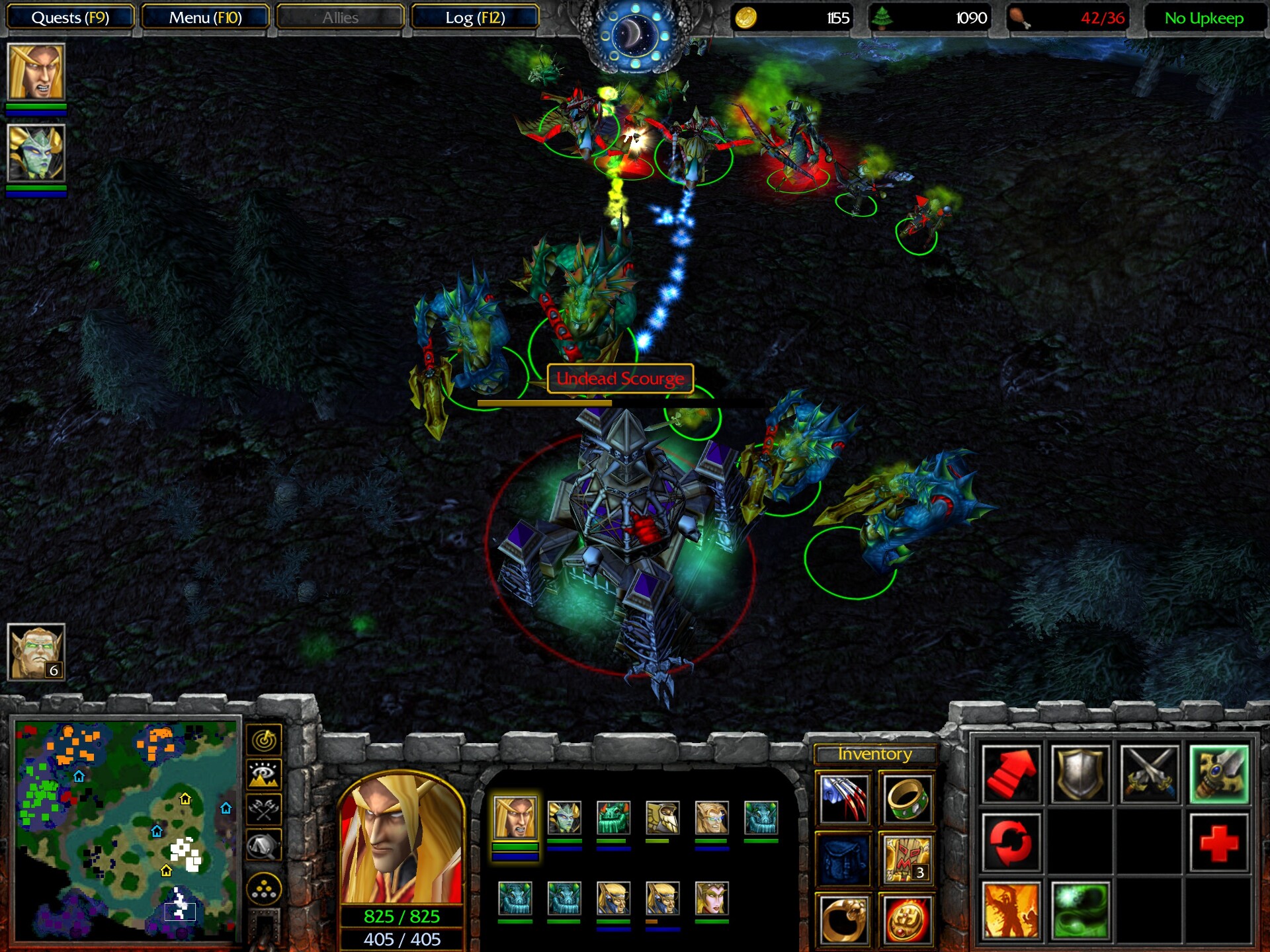
Meanwhile, green is pestering my main base with aerial attacks, so I bring an army of workers to build a line of towers.
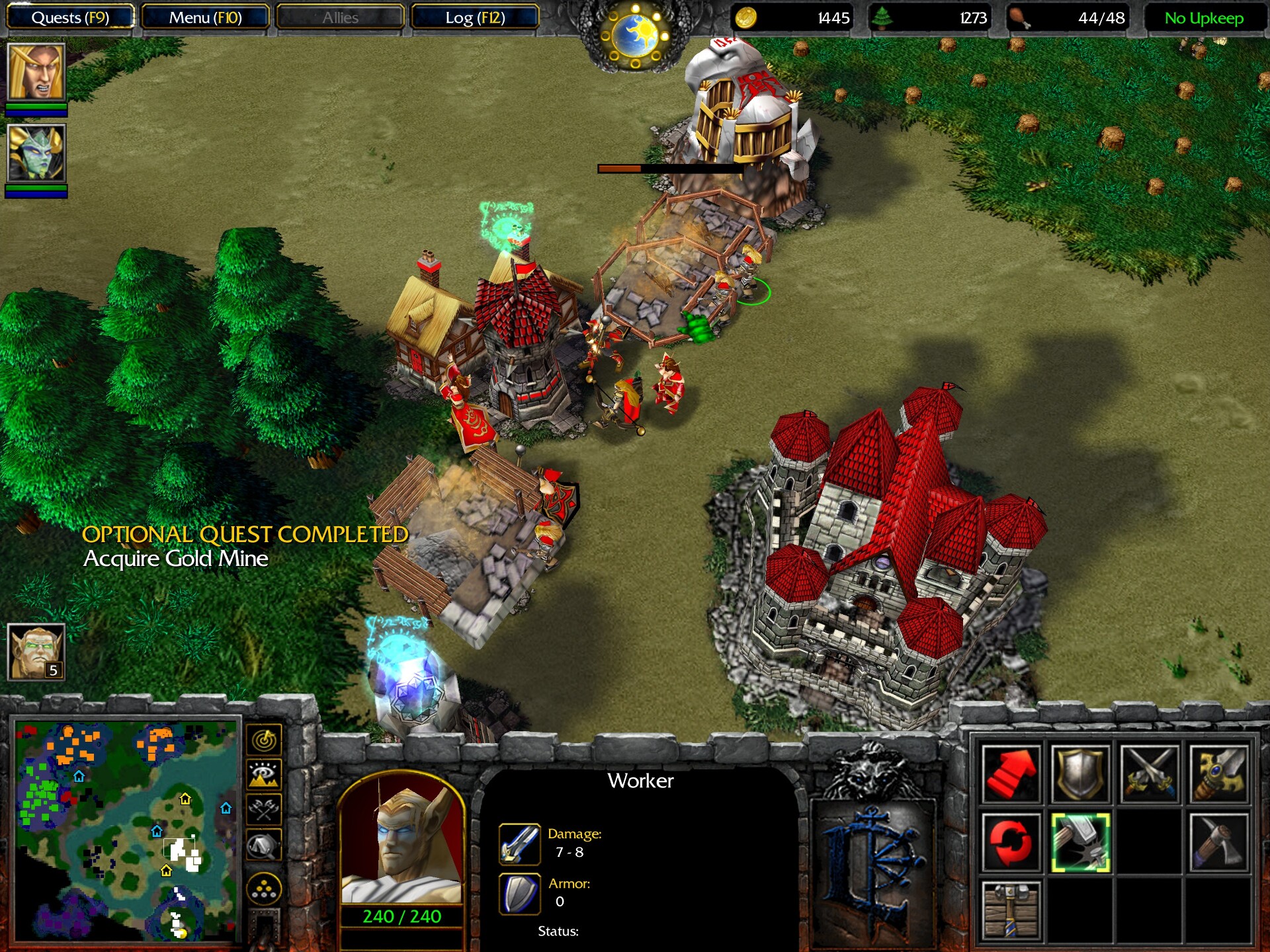
In this mission, I built mostly dragonhawks. They do okay damage, can immobilize enemy flyers (which is especially effective against frost wyrms), and can be rapidly redeployed between assaults on outlying bases and defense of the central one. They can also be sent from the island without using ships, which otherwise only the amphibious naga units can do.
I also build a few more priests to heal the naga units, as they’re both powerful and irreplaceable.
Once all five outlying undead bases are destroyed, I assault the huge green base.
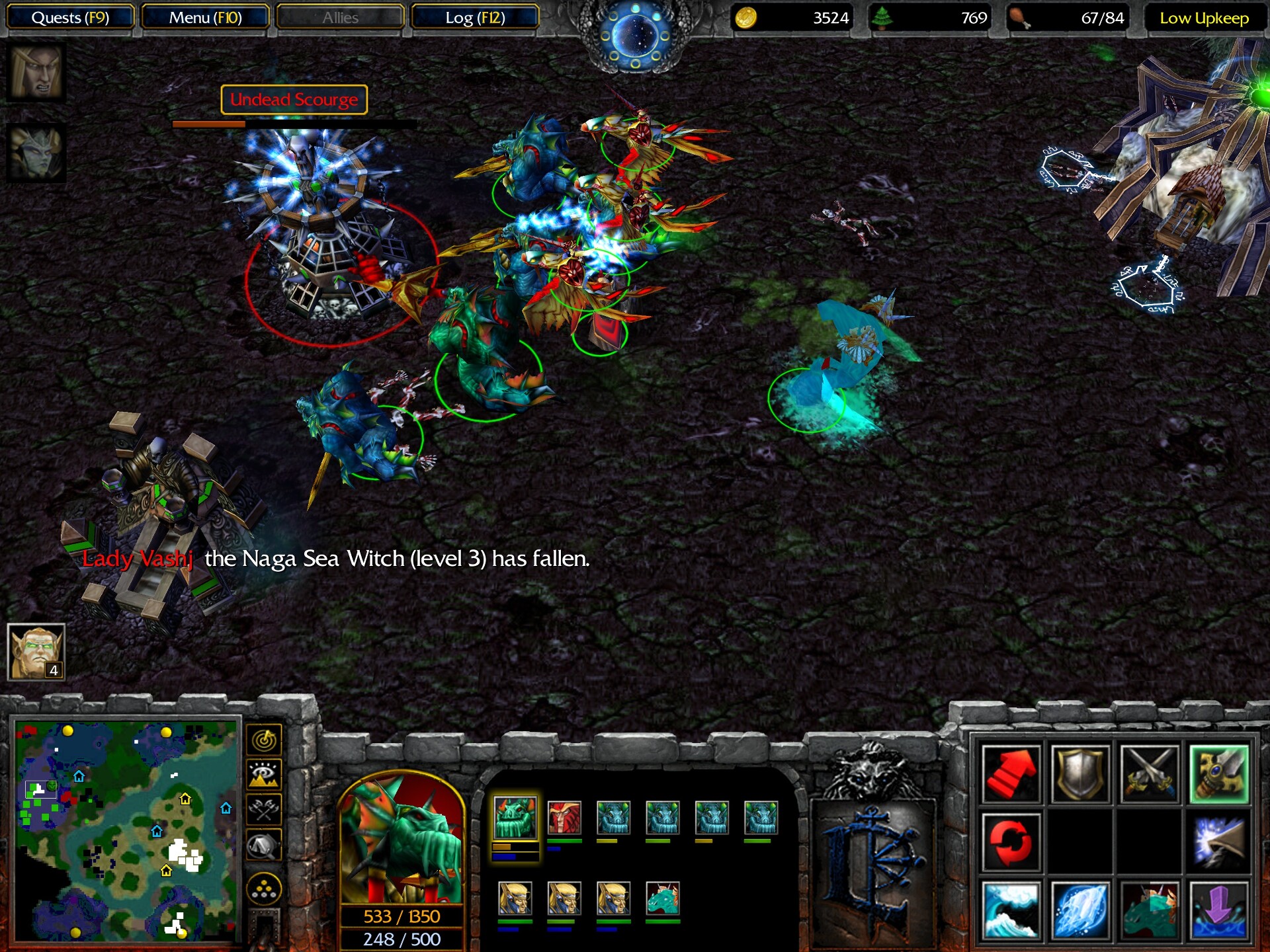
The blood elves and naga celebrate victory… for now. Kael confides something to Vashj that is going to be very, very important to the overall franchise.
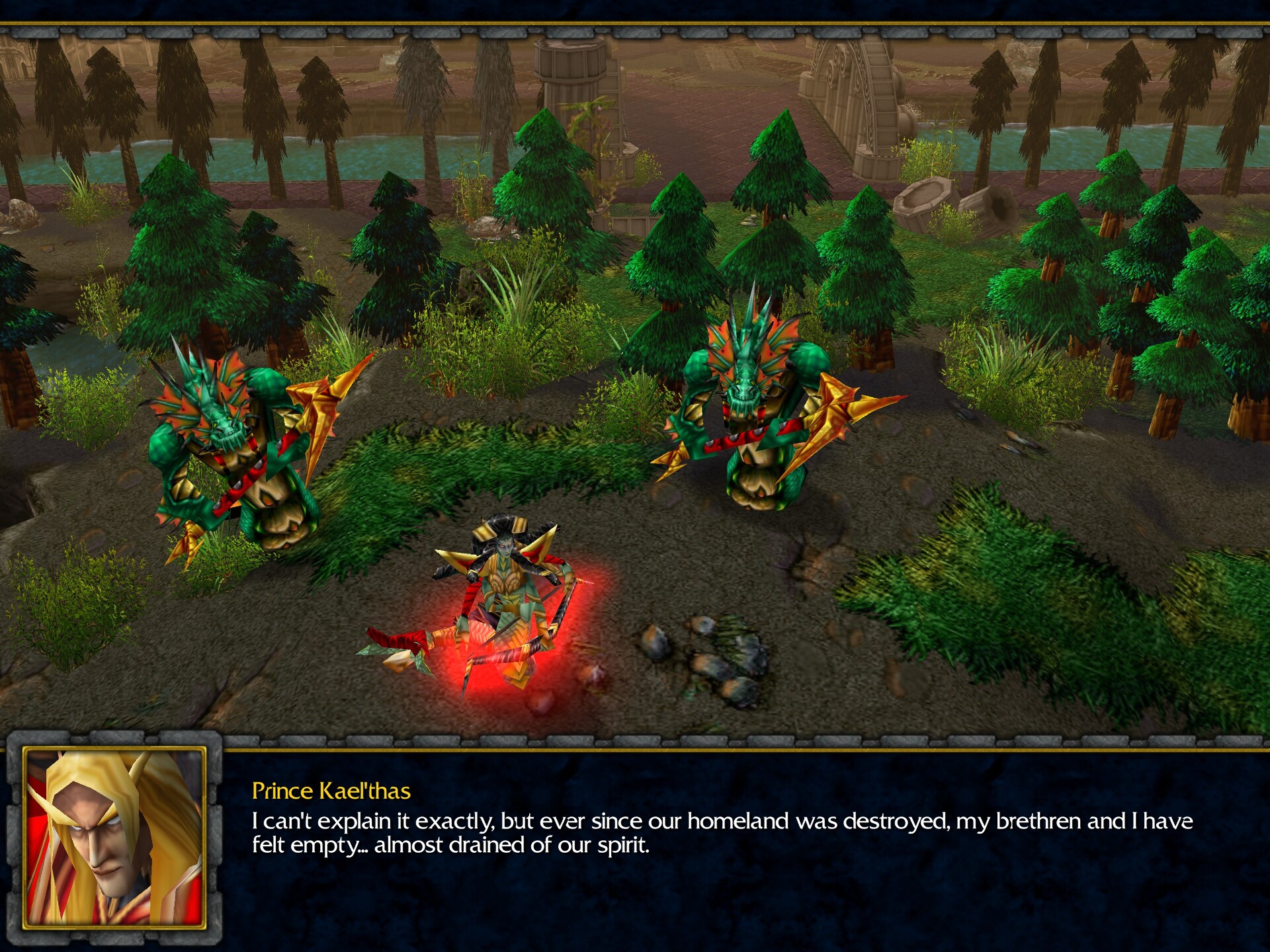
Vashj knows exactly what Kael is talking about. Like the naga, who are former Highborne, the blood elves are addicted to magic. It flowed through their veins for ten thousand years, and now, with the Sunwell destroyed and Quel’Thalas corrupted, its people are cut off from magic — and will surely die unless a new source is found.
Magic addiction is familiar to us today and is a well-known element of the Warcraft setting, but back in 2003, it was a brand new development. From Warcraft 1 to Reign of Chaos, there was no evidence that magic was like a drug and being cut off from it could cause withdrawal; the worst you could say was that magic users, from Azshara to Antonidas, could sometimes be arrogant and too confident in their power, but that was not universally the case; Khadgar and Jaina were both characterized as decent people.
The introduction of magic addiction made the destruction of the Sunwell that much worse. Not only were the elves of Quel’Thalas cut off from their source of power; they were starving, and now their very survival depended on finding a replacement. On the other hand, it retroactively made the sacrifice of the night elves, who went cold turkey on magic after the Sundering, more justified and more poignant.
Vashj proposes demons as an alternate source of power, but Kael says they will never be that desperate. Before Vashj can retort, a spell breaker arrives.
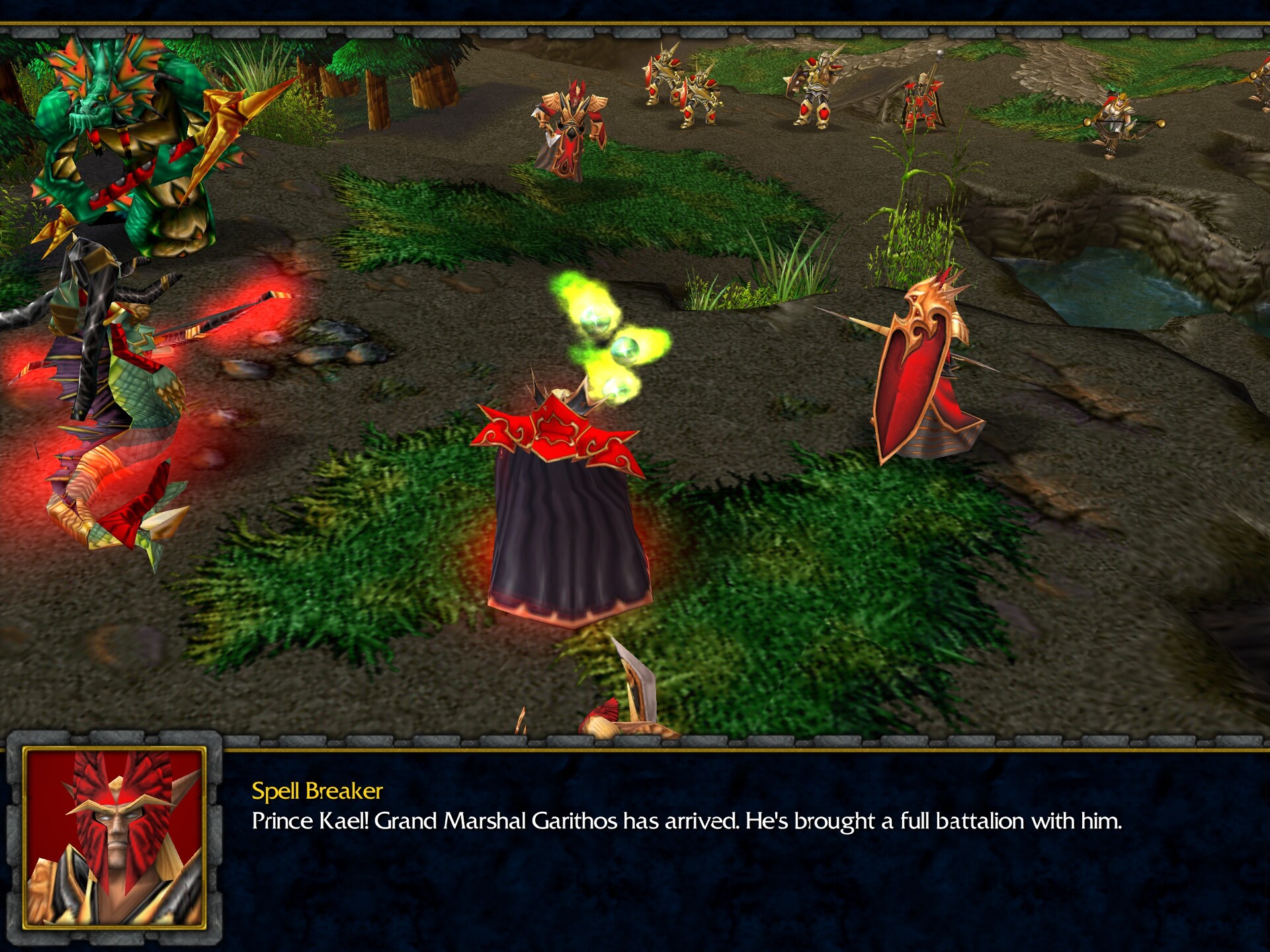
The naga try to hide, but it’s too late; Garithos’s knights notice them retreating. The Grand Marshal himself makes a pronouncement from his high horse.
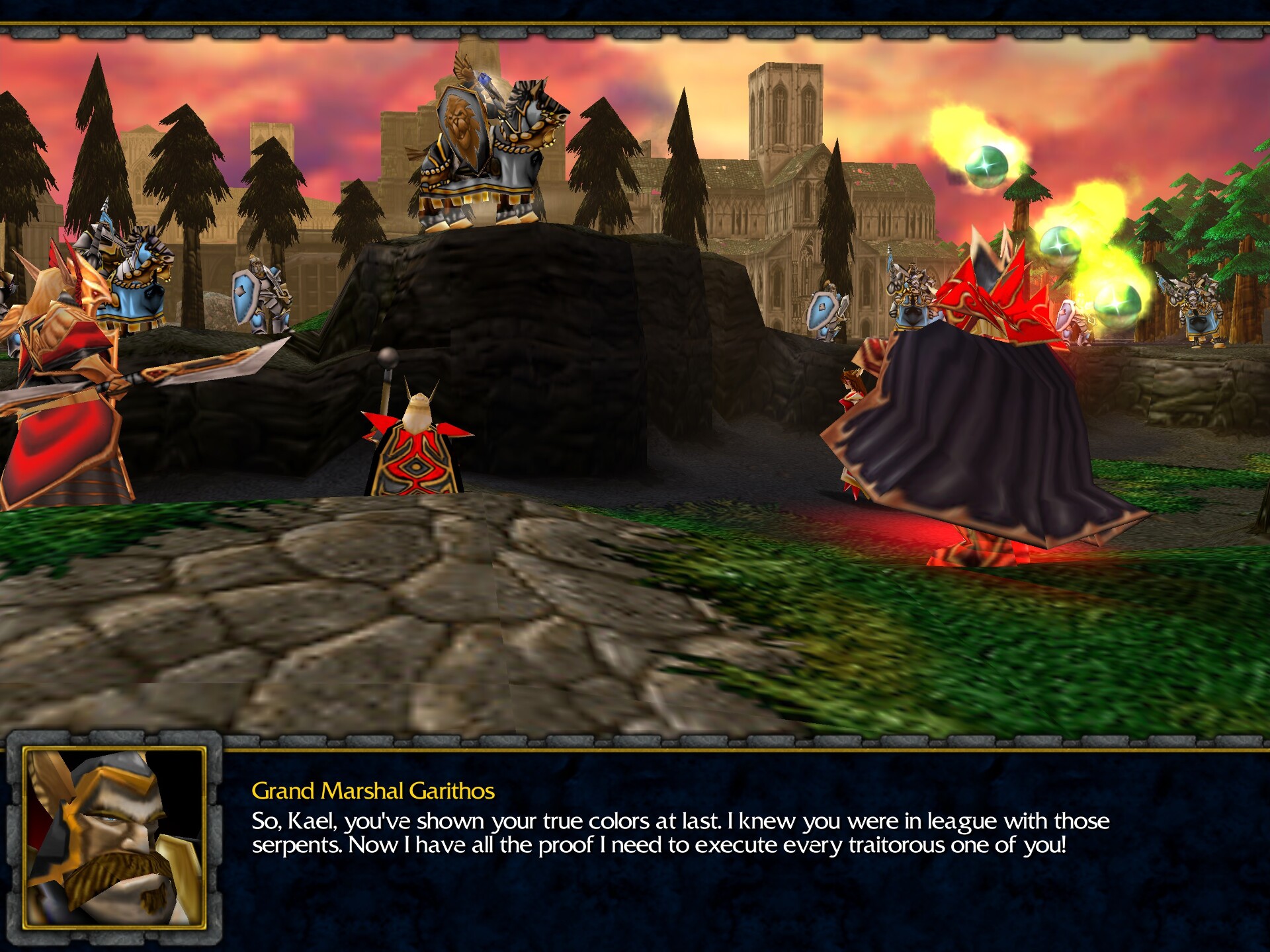
I like the cinematography here, such as it is. Garithos is standing on a hill, and the scene is seen from a low angle with buildings in the distance. I wonder if it’s an intentional throwback to Arthas in “The Culling”. Like then, we have passed a point of no return; an arrogant, overzealous Alliance commander is accusing his subordinates of treason, and in doing so, sealing both their fate and, as we’ll see much later, his own.
Kael tries to defend his men, saying that the decision to ally with the naga is his alone, but Garithos won’t listen. The blood elves are arrested, disarmed, and taken away to…
The Dungeons of Dalaran
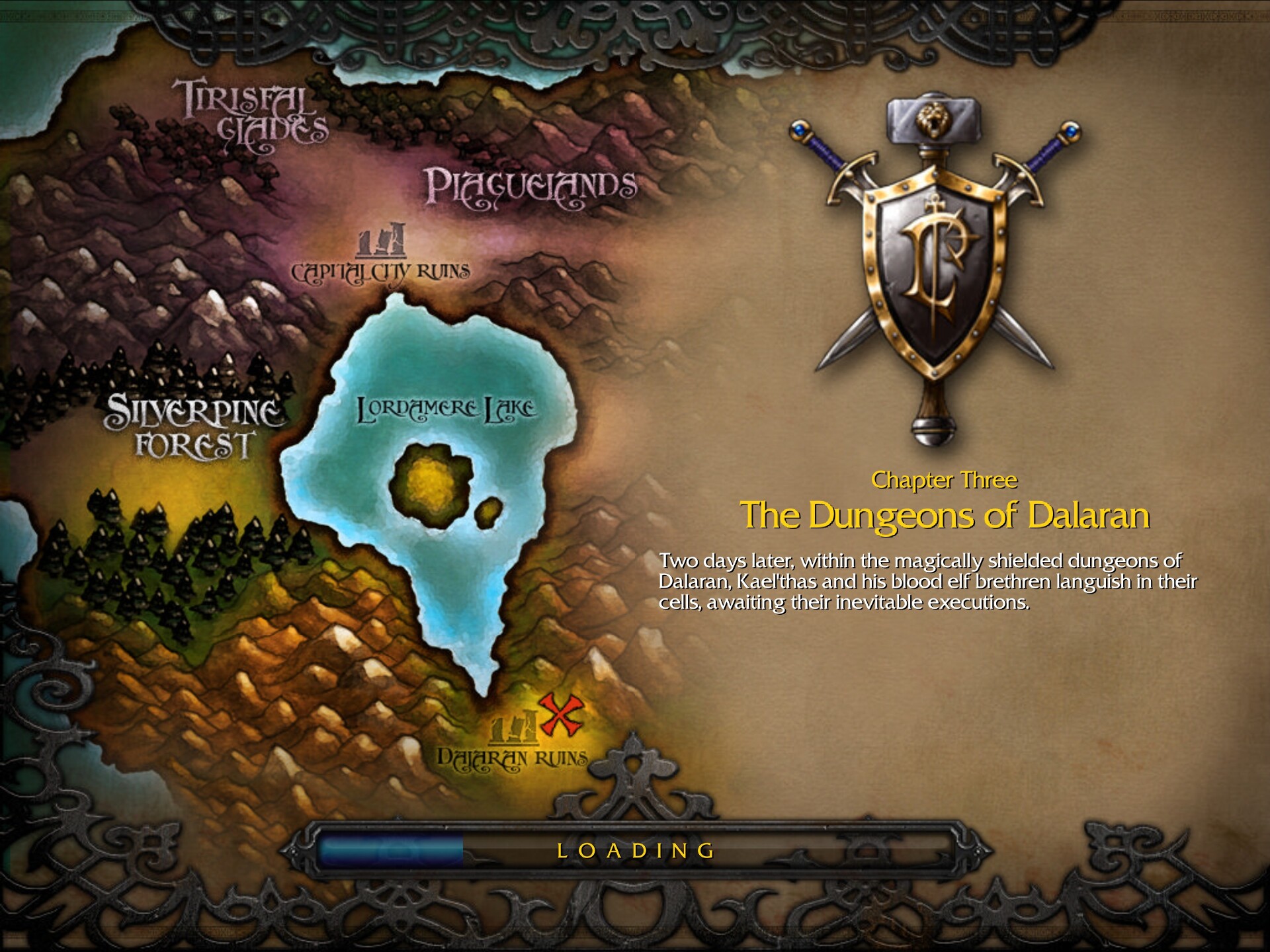
As Kael wastes away in his anti-magic cell, two guards — who actually have names — are bragging about how the anti-magic cells will keep the elves at bay. Then, they’re instantly killed by Vashj, who sneaked in through the canals to save Kael a third time.
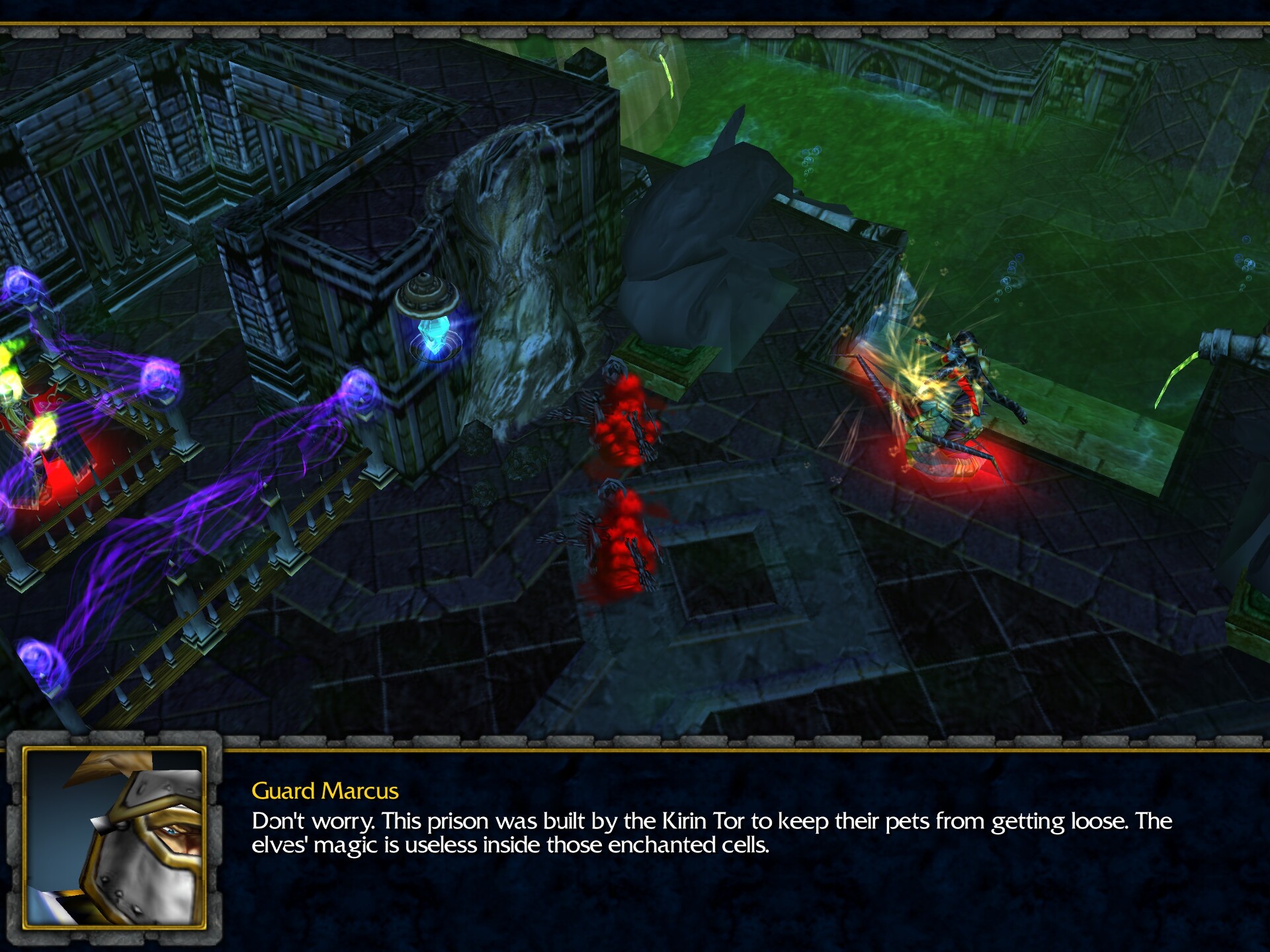
Kael recognizes that even if he and his people escape prison, they have nowhere to run. However, Vashj presents a solution.
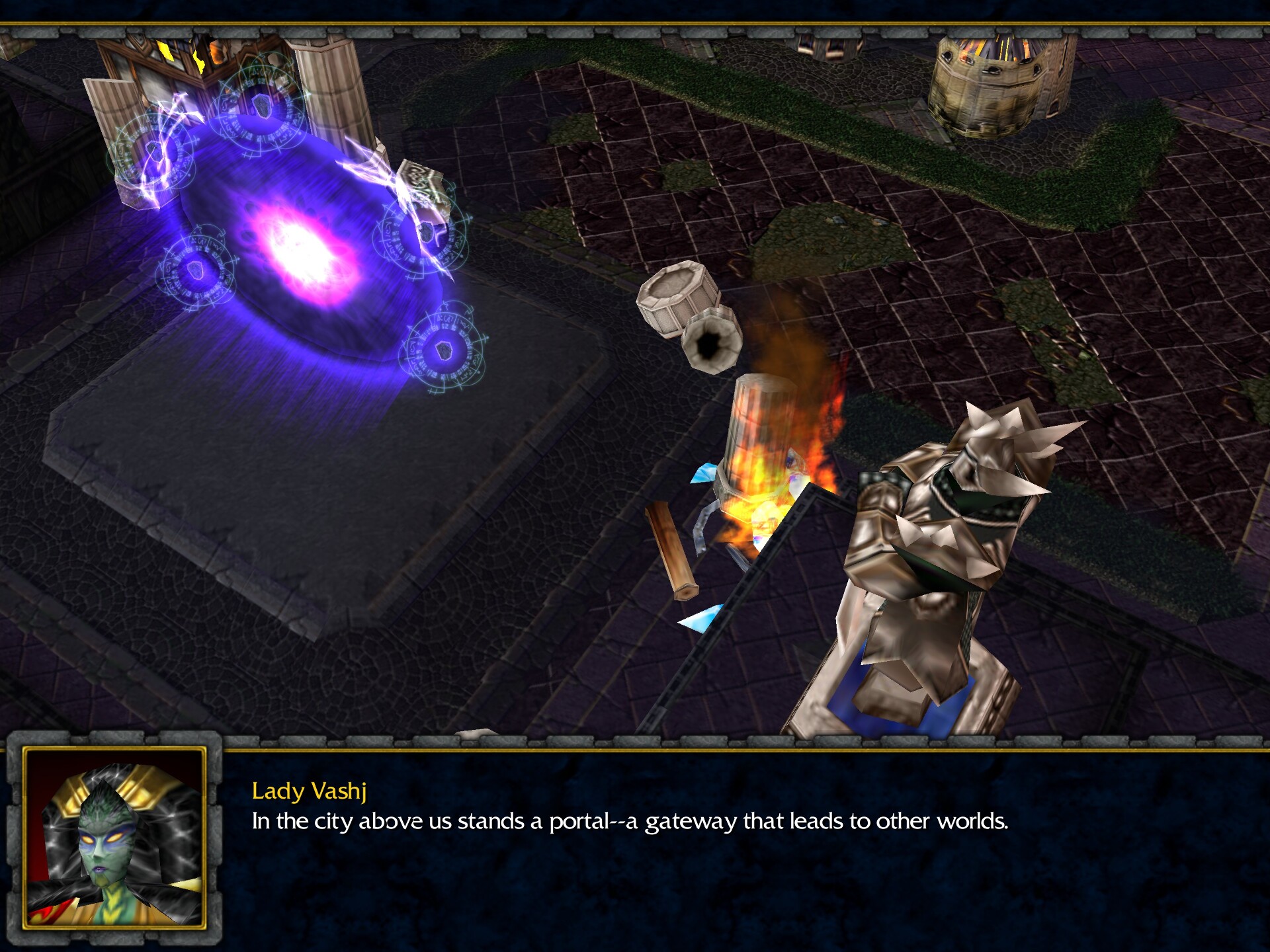
This portal was opened by Kel’Thuzad to bring Archimonde to this world, and somehow it hasn’t been closed in the months since then. It’s a bit of a contrivance, but I can let it pass. After all, Dalaran remained in the hands of the Burning Legion until Garithos recently retook it, and presumably his forces don’t have a mage of Khadgar’s calibre who would have both the knowledge and the power necessary to close a dimensional gateway. On the other way of this portal, Vashj’s master, Illidan, is waiting.
It’s pretty clear that Vashj isn’t telling Kael everything at once. In the first mission, she claimed to be on her own after Illidan’s departure, but now she calls him her master — and knows where he is. I think what’s happening here is that by exploiting Kael’s increasing desperation and feeding him information piecemeal, Vashj is opening him, bit by bit, to the idea of permanently allying with her and Illidan — a thought he would initially find reprehensible, especially considering he fought them on the night elves’ side not that long ago.
Thus begins another dungeon crawl. “The Tomb of Sargeras” is still my favorite one, but this is a close second.
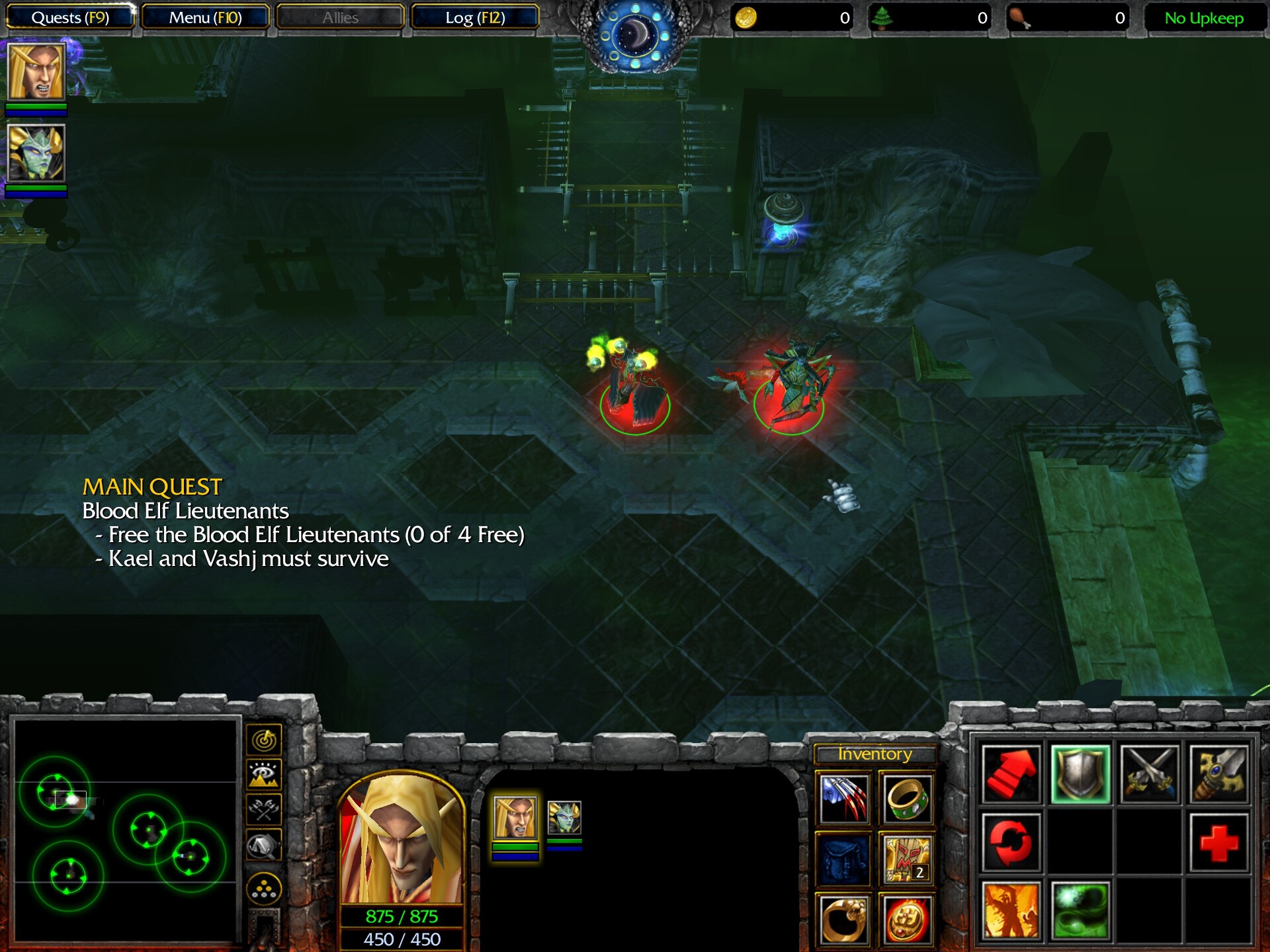
The premise here is a bit similar to “The Fires Down Below” from way back in Thrall’s prologue campaign. We’re breaking from a prison, so our goal is to free our fellow prisoners, who then fight for us. A nice visual touch here is that other than the four lieutenants, freed blood elf prisoners start with civilian models, then go to the nearest armor stand to arm themselves, turning into spell breakers, priests, or archers.
Like in “The Tomb of Sargeras”, there’s a lot of secrets and puzzles here. They start small, like this item that is lying in water. To loot it, you have to destroy the giant mushrooms with Kael’s Flame Strike, then take Vashj into the water.
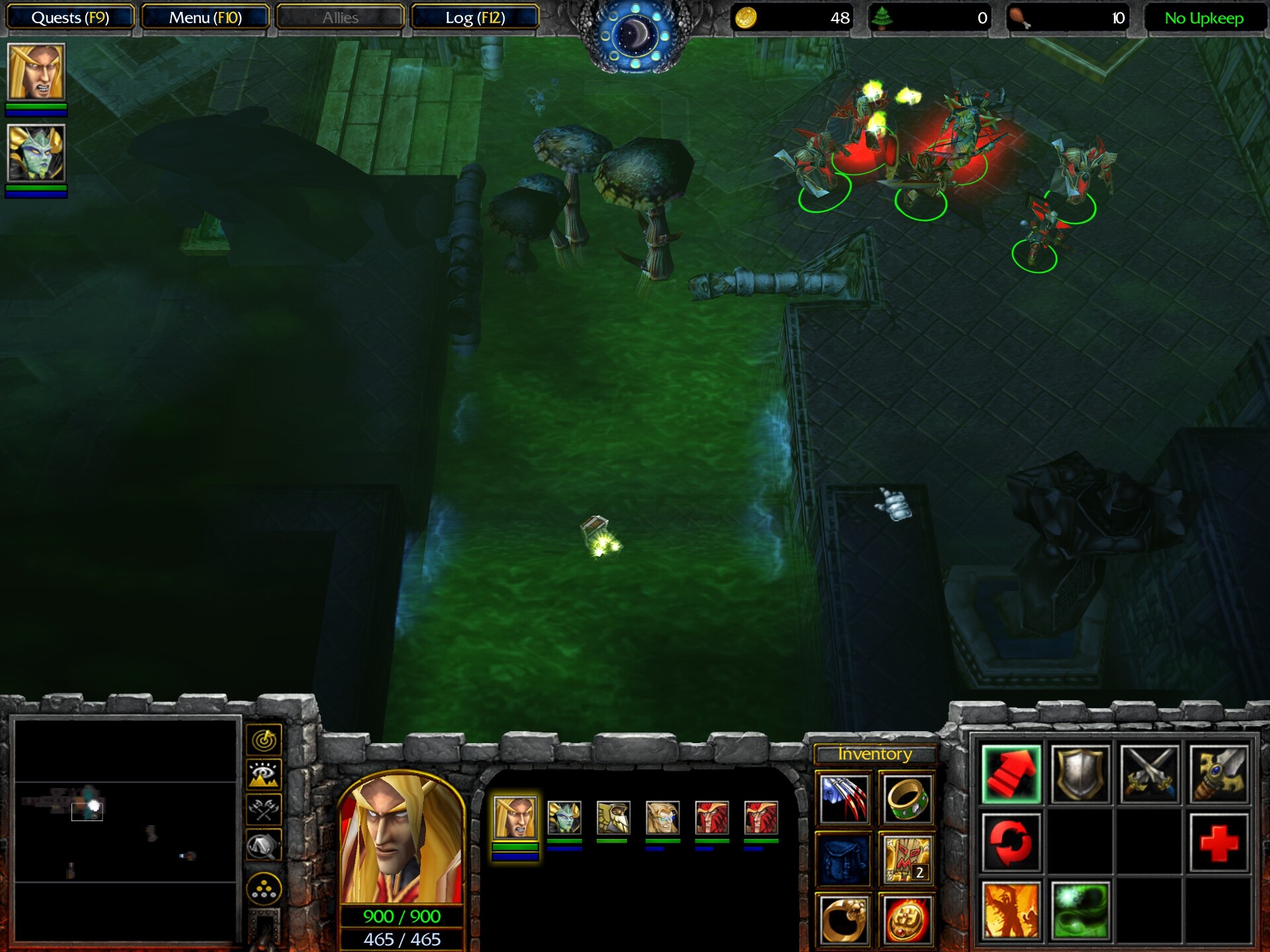
Soon, we’re introduced to the side quest of this mission, as well as its overall mechanic.
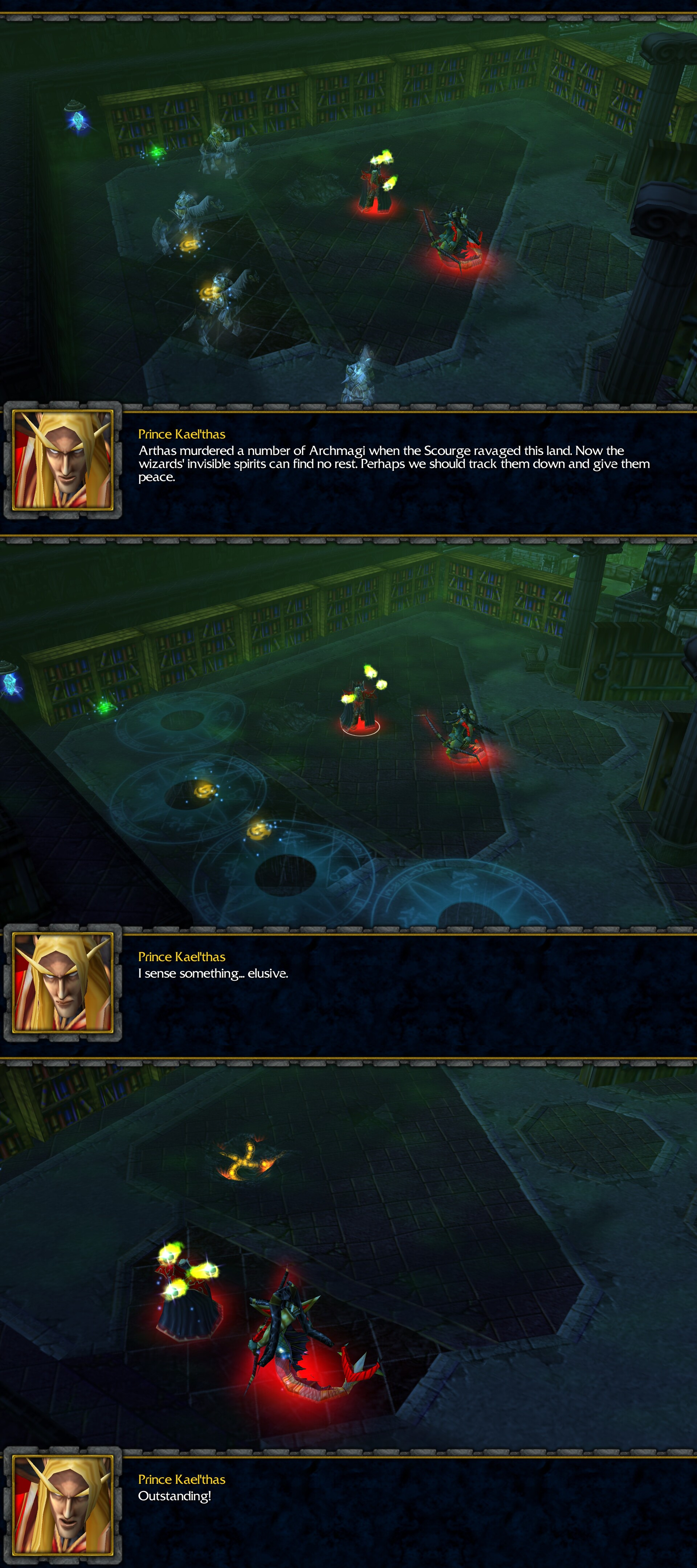
We need to find four ghostly archmagi, give them eternal rest, and take their stuff. Like with Shadow Orb fragments, they drop fragments that empower a combining item, specifically a ring that, at its full power, gives nearby units a Brilliance Aura effect — enhanced mana regeneration. This normally requires an Archmage hero, and with the fully assembled ring, Kael and Vashj can now cast with impunity.
To unlock the rooms with the archmagi, we must find matching pairs of colored runes. Apparently they ran out of time to record Kael’s dialogue explaining this, because he reuses two of his generic unit lines for this cutscene. This made the original Russian dub’s version of this cutscene unintentionally hilarious: “I sense something… elusive” was for some reason translated as “Hurry up!”, so in the cutscene, Kael says “Hurry up! Excellent!” despite no obvious source of any time pressure.
Not all pairs of runes lead to archmagi. Some reveal powerup items, and one particularly tricky pair, where one rune is far away and initially hidden under giant mushrooms that need to be burned down to reveal it, leads to a treasure trove of items guarded by a powerful arcane golem.
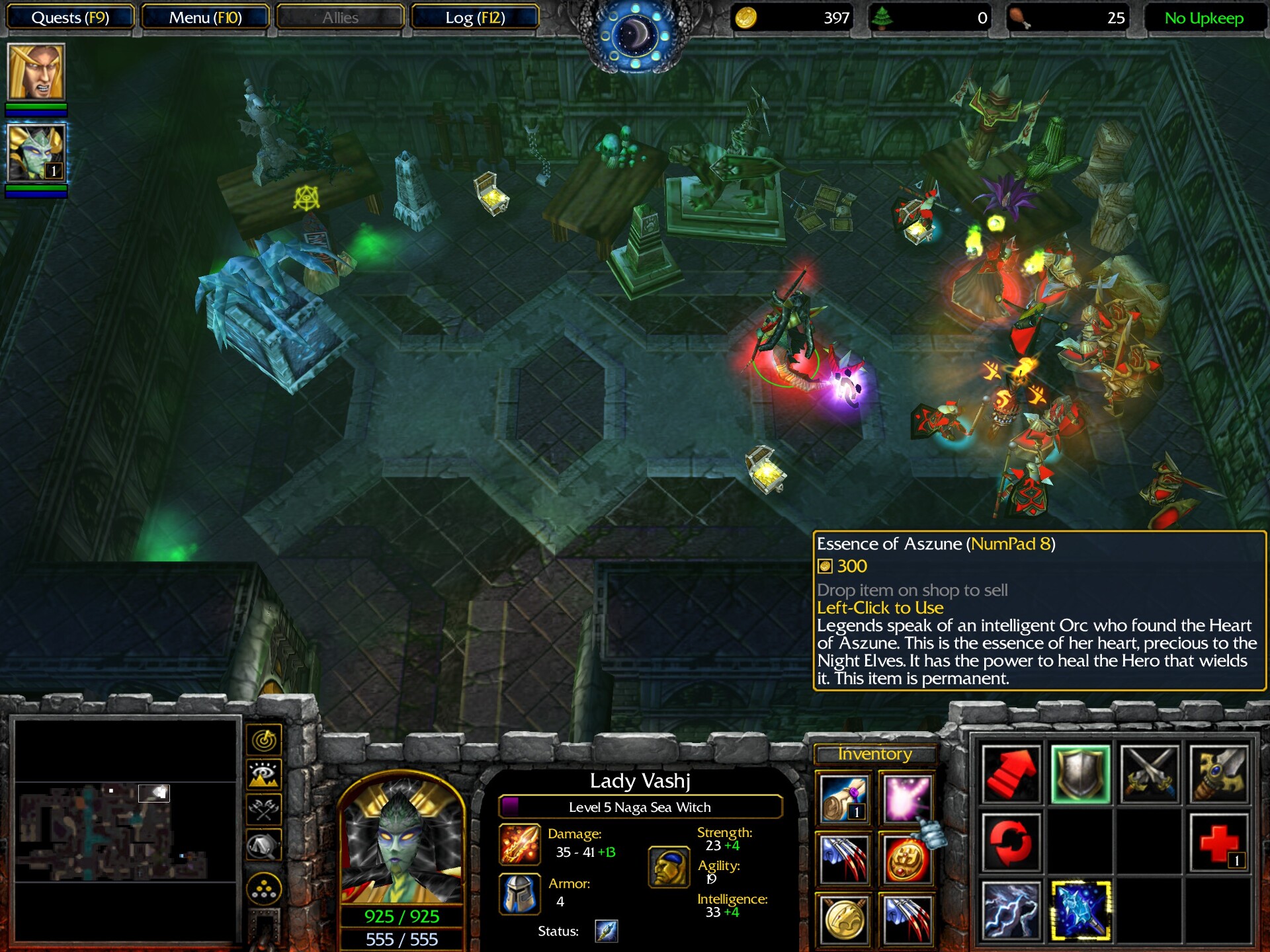
There is also… this room.
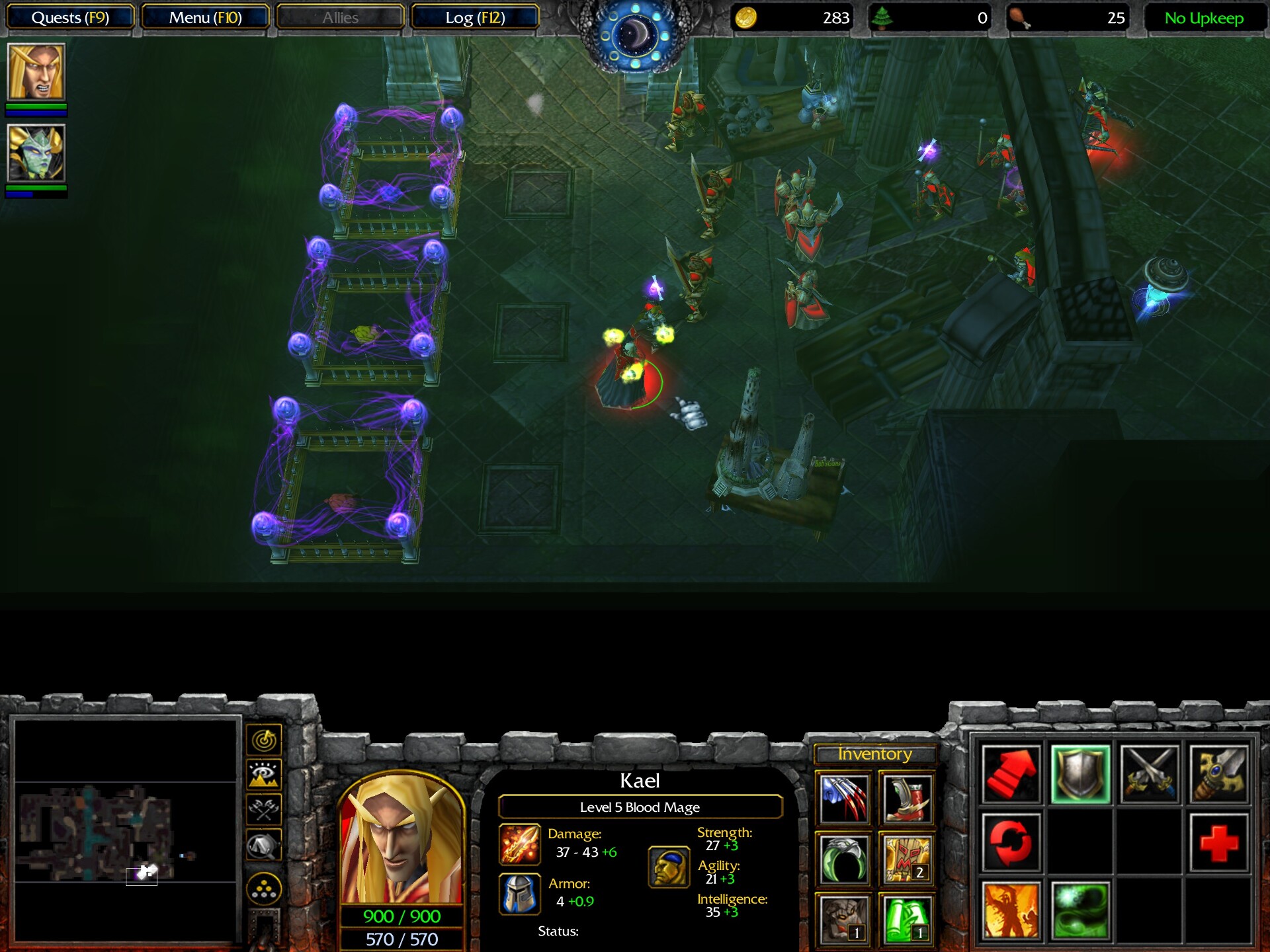
The three pressure plates in front of the colored sheep need to be activated in the correct sequence so that the sheep say “baa, ram, you”. Once activated in this manner, they will open a door to… whatever this is.
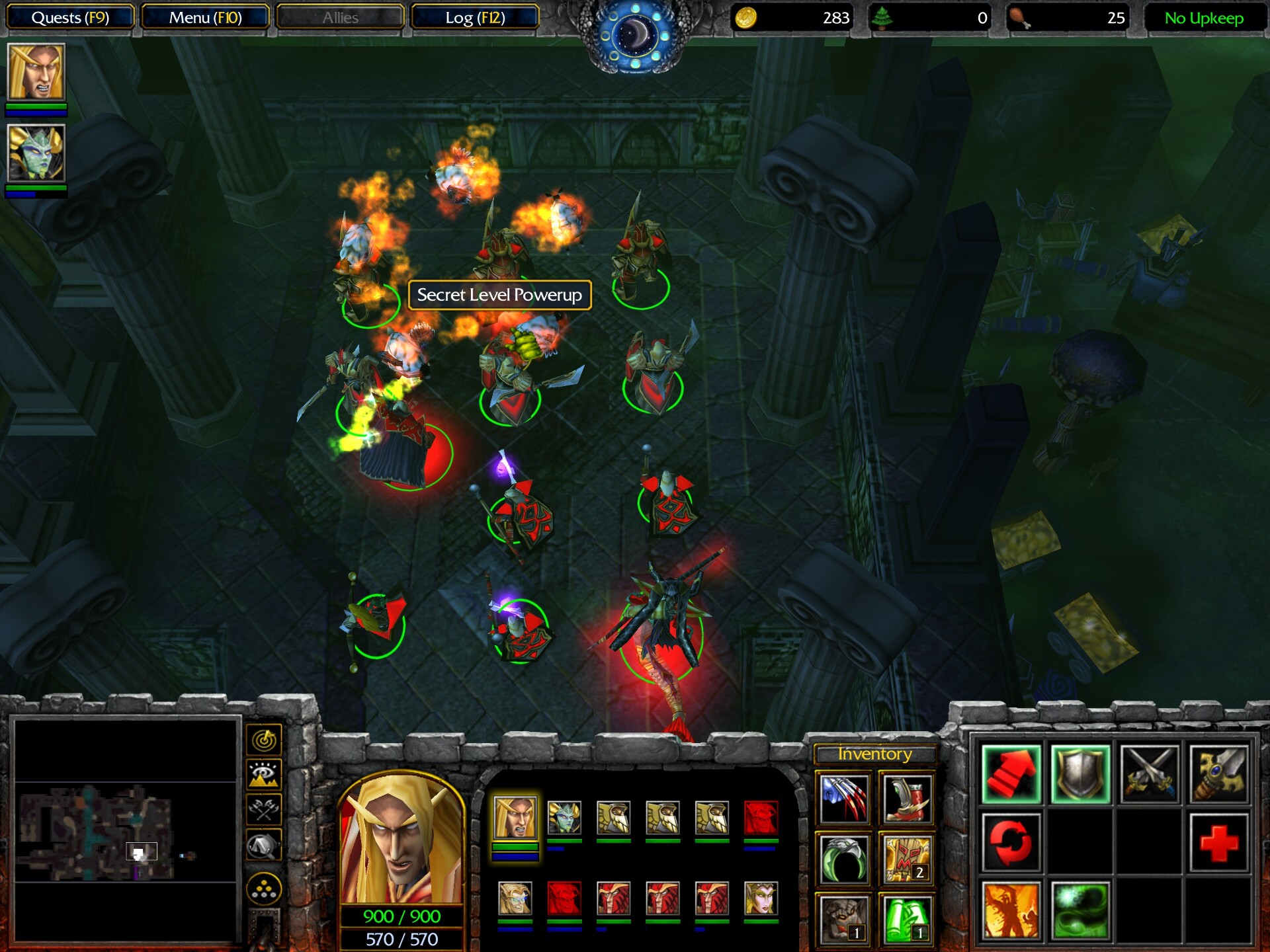
Taking the “Secret Level Powerup” makes the flying sheep do a little dance and unlocks the eponymous secret level. What secret level? We’re about to see.
After an encounter with flesh golems released by guards, we free a whole lot of blood elves from prison cells and kill this guy, Jailor Kassan, who has a pretty nice “working class” accent, as well as a lot of Garithos’s men.
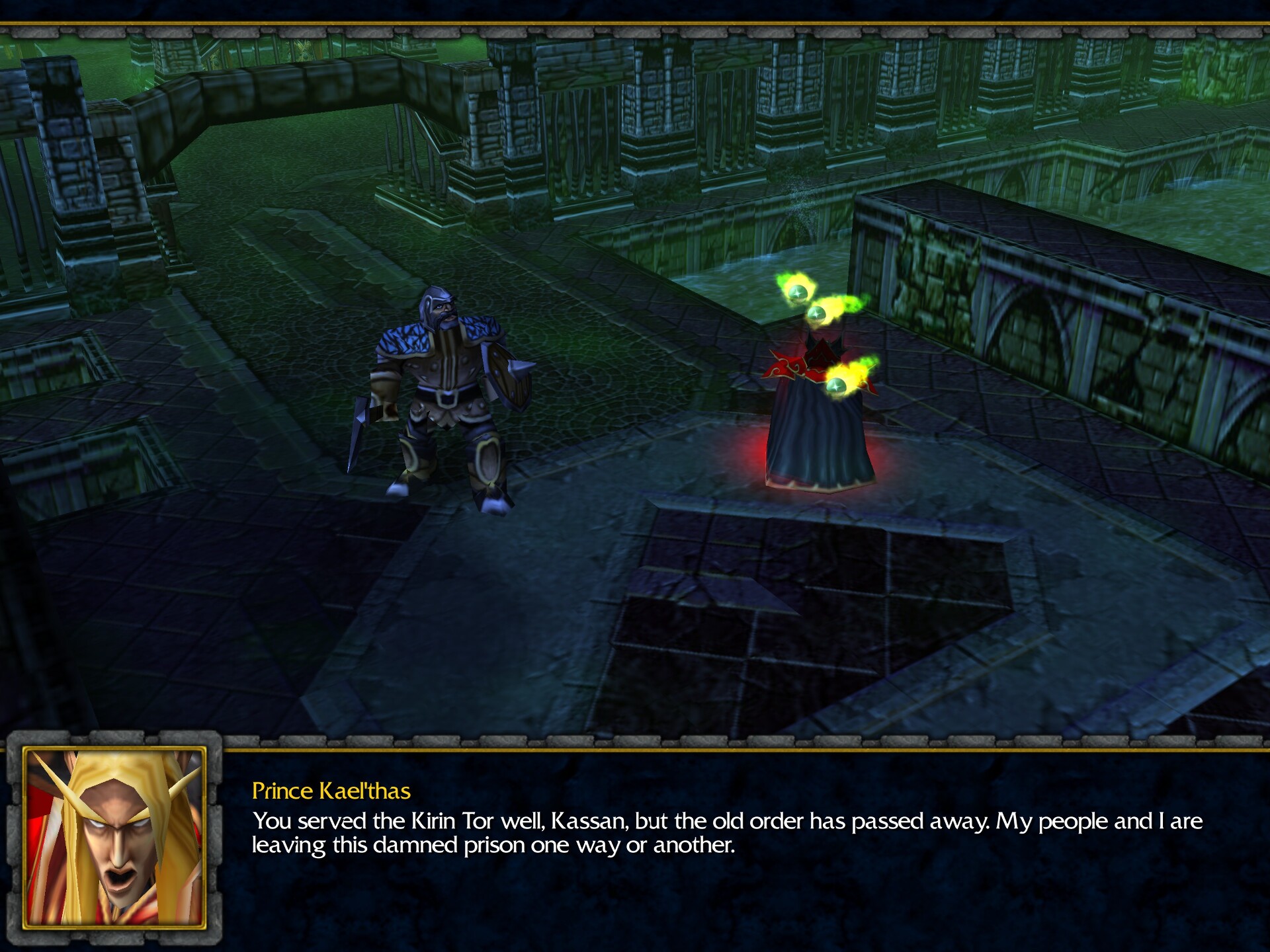
Jailor Kassan has a ton of HP, but isn’t a difficult fight. With his death, the escape from the dungeons of Dalaran is complete. All that remains is to keep the portal open long enough for everyone to escape through — which will be difficult, as Garithos’s forces will surely try to destroy it.
The Crossing
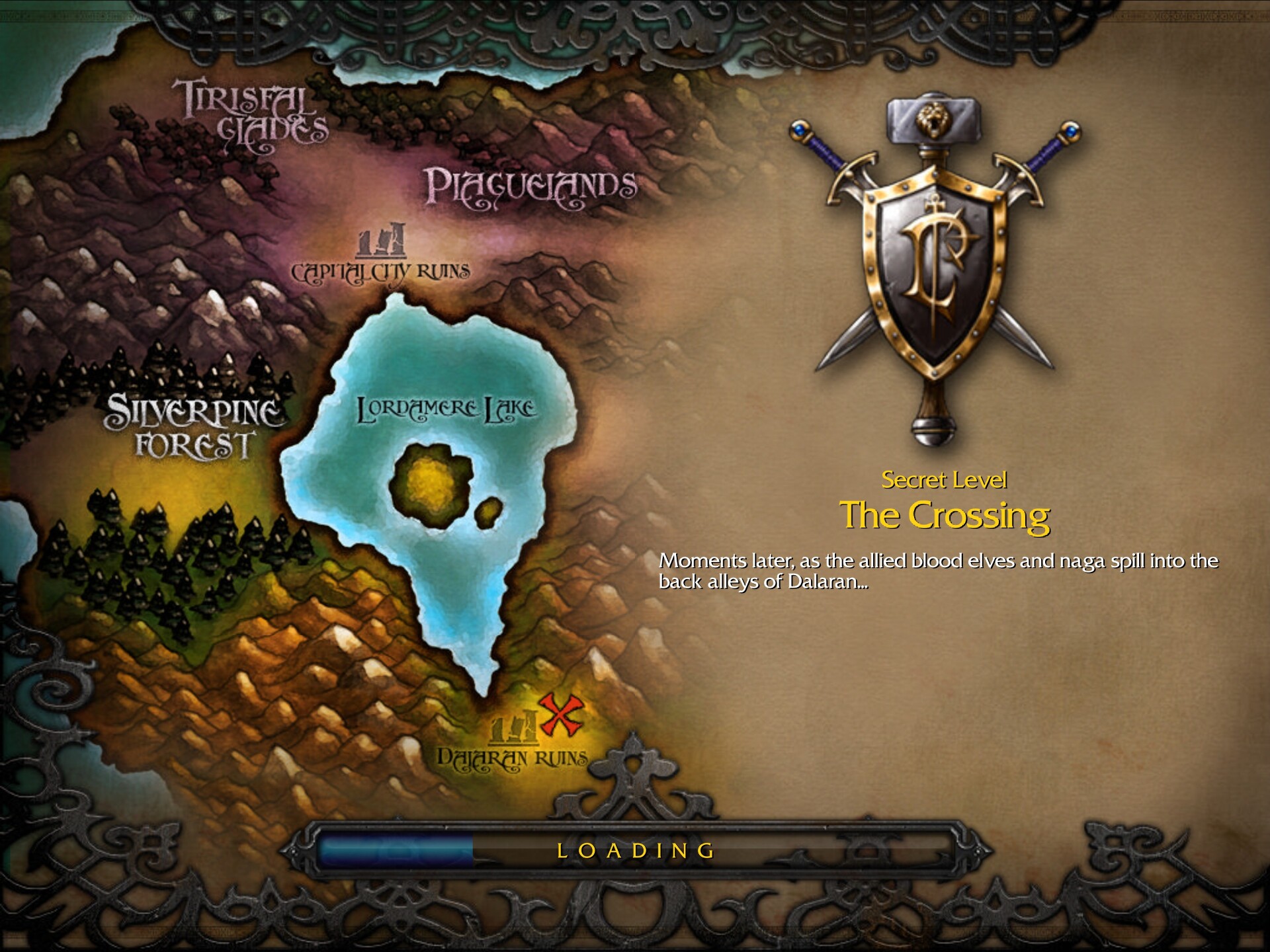
This is the secret mission I mentioned earlier. If the sheep secret is not activated, it will simply be skipped.
The blood elves are escaping through the portal, and Garithos is not exactly happy about it. Your job is to construct fortifications and hold the line until everyone is through.
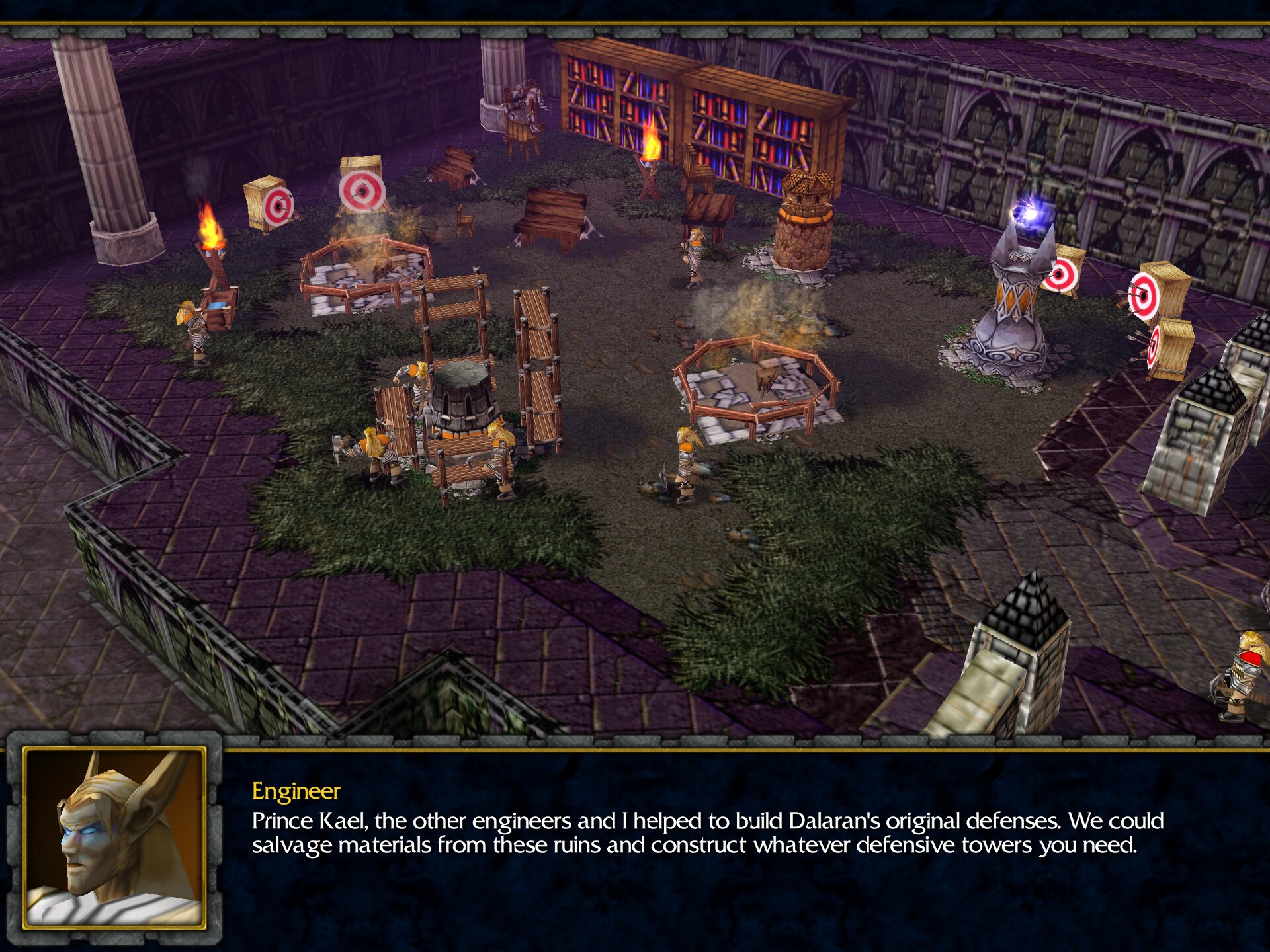
Sounds like a perfectly ordinary premise. So why is this mission secret?
Because it’s a radical departure from normal Warcraft 3 gameplay. It’s a tower defense mission.
Tower defense is, at its core, a game genre that revolves around constructing fortifications to automatically attack incoming enemies before they reach an exit. There were many successful stand-alone games in this genre, and it was also popular type of custom maps for Warcraft 3, made possible by the formidable capabilities of the World Editor. It was popular enough that Blizzard couldn’t resist taking a swing at a tower defense map themselves.
Here’s a taste of what the mission map looks like:

Garithos’s forces are divided into thirty waves. They follow the same winding path, ignoring absolutely everything in their way until they reach the portal, with every enemy unit that reaches it dealing damage to it. If the portal’s HP drops to 0 before all thirty waves are exhausted, you lose. You thin out the enemy waves along the way by having your engineers construct towers along the side lanes at a rapid pace, with more and more effective types of towers periodically unlocked. Destroyed enemies drop gold coins, which you loot with your heroes to get gold to build more towers.
I struggle to consider this mission canon, and this might be one of the reasons it was given its secret status. Why would Garithos, a notorious racist, have such a diverse array of creatures under his command, from goblins to trolls to pandaren to dragons to undead — the same undead he himself is fighting? How did they all agree to fight for him? How did they get here (in particular, how did the centaurs get here from Kalimdor)? Why do they all lack even the most basic sense of self-preservation? Why are the engineers able to build the towers so quickly, and why don’t they do it earlier or later? Why… why… why…
You get the idea. I like the concept of this mission, but perhaps it would have been better executed as a standalone scenario, not part of the story campaign.
I like the engineers, though. Their unit lines are downright hilarious because of how long they are, and the rapid-fire delivery also sells it, and as an engineer who hates being pulled out of the state of flow, I can relate to them.
- “You’re interrupting my calculations!”
- “Yes, yes, I’m already on it.”
- “An elf would have thought of something better!”
- “No, no, no, not like that! Let me do it!”
This mission is very demanding of the player’s APM, so I only managed to survive a measly 12 waves out of 30 before my portal was wiped out. So what happens if you lose?
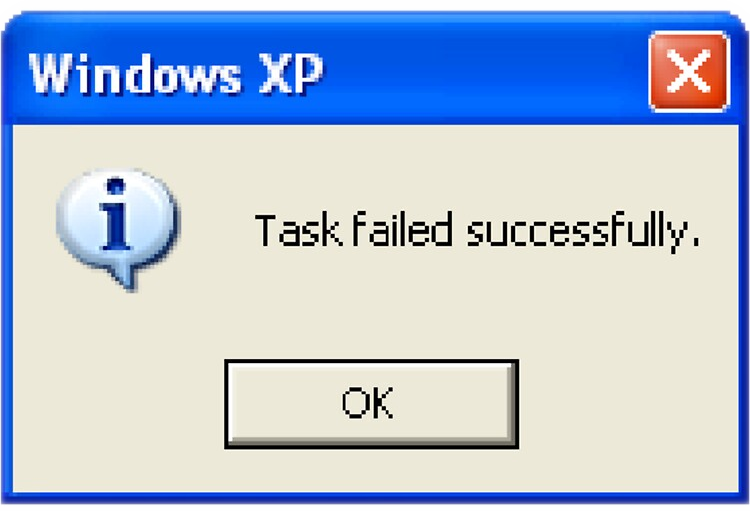
Turns out you’re shown a “YOU LOSE!” screen telling you how many waves you’ve survived (and keeping track of your high score, in case you’d like to replay), but the main quest is marked as completed anyway, and you still see the victory cutscene.
If you do manage to survive all 30 waves, you’ll be given a third hero, a Pandaren Brewmaster, for the next mission. Since the next mission is easy anyway even without the extra help, completing the secret mission is entirely optional.
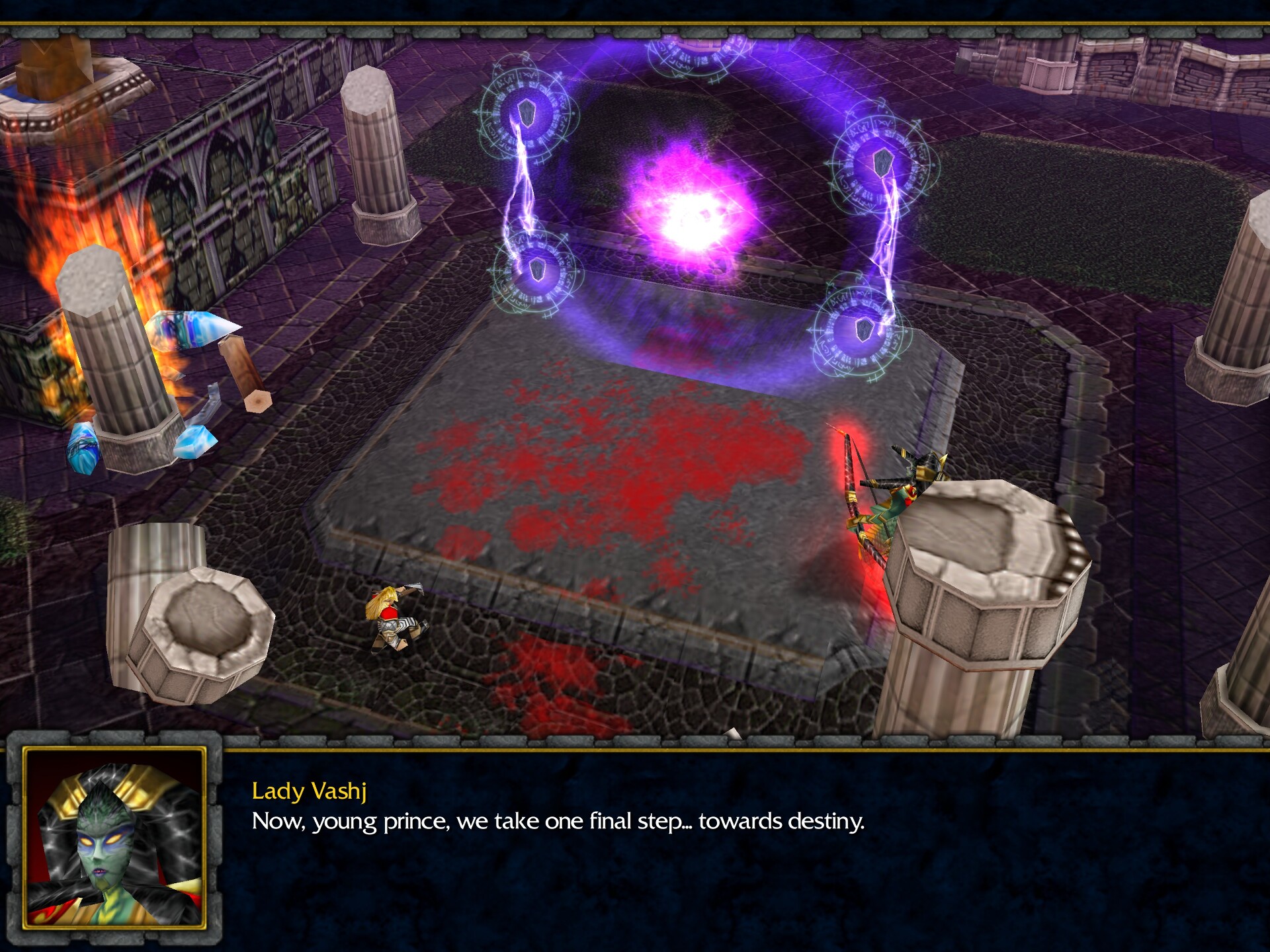
Next up: we find out where the portal actually leads!
-
As we know from later lore, his first name is Othmar. At this point I’m convinced that fantasy sounding names like Arthas, Terenas, Othmar Garithos and Tirion Fordring are reserved for Lordaeronian royalty and nobility, while commoners have names like Mike, Scott, and Stephanie. ↩
Leave a Comment